Volkswagen's largest SUV to date, the Atlas made its public debut in 2016 Los Angeles Auto Show and went into production for the 2018 model year. Rumored for many years, the Atlas was previewed by the CrossBlue concept all the way back in 2013. The SUV rides on the Volkswagen Group's MQB platform, which is shared with the slightly smaller Skoda Kodiaq. Although similar is size to the more upscale Audi Q7, the latter uses the newer MLB2 underpinnings. The three-row SUV was unveiled with two turbocharged engines and will be built at the company's Chattanooga plant in Tennessee. The Atlas will be marketed as the Volkswagen Teramont in China when production in Shanghai will begin in 2017.
Although the Atlas has yet to hit dealerships as of January 2017, Volkswagen has already rolled out a new version. Dubbed R-Line, it's similar to other vehicles wearing the same badge, sporting a trim package that adds unique features inside and out for a more distinct look among regular models. The R-Line is based on the SE and SEL trims and comes with no upgrades under the hood -- which isn't surprising given that this is the case for other nameplates too.
Updated 01/10/2017: We added a series of images taken during the car's official debut at the 2017 Detroit Auto Show. Check them out in the "Pictures" tab.
Continue reading to learn more about the Volkswagen Atlas R-Line.
2017 Volkswagen Atlas R-Line
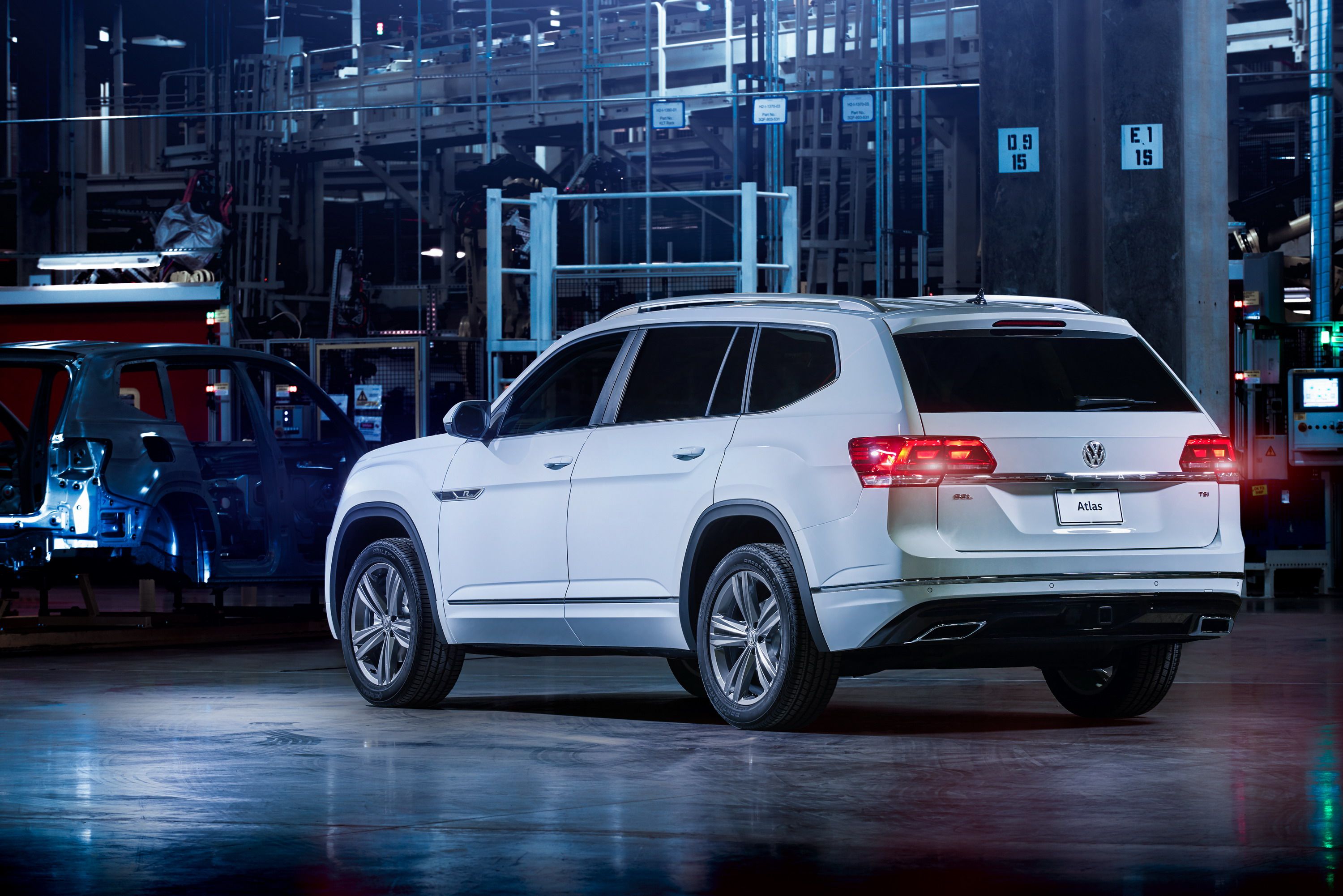

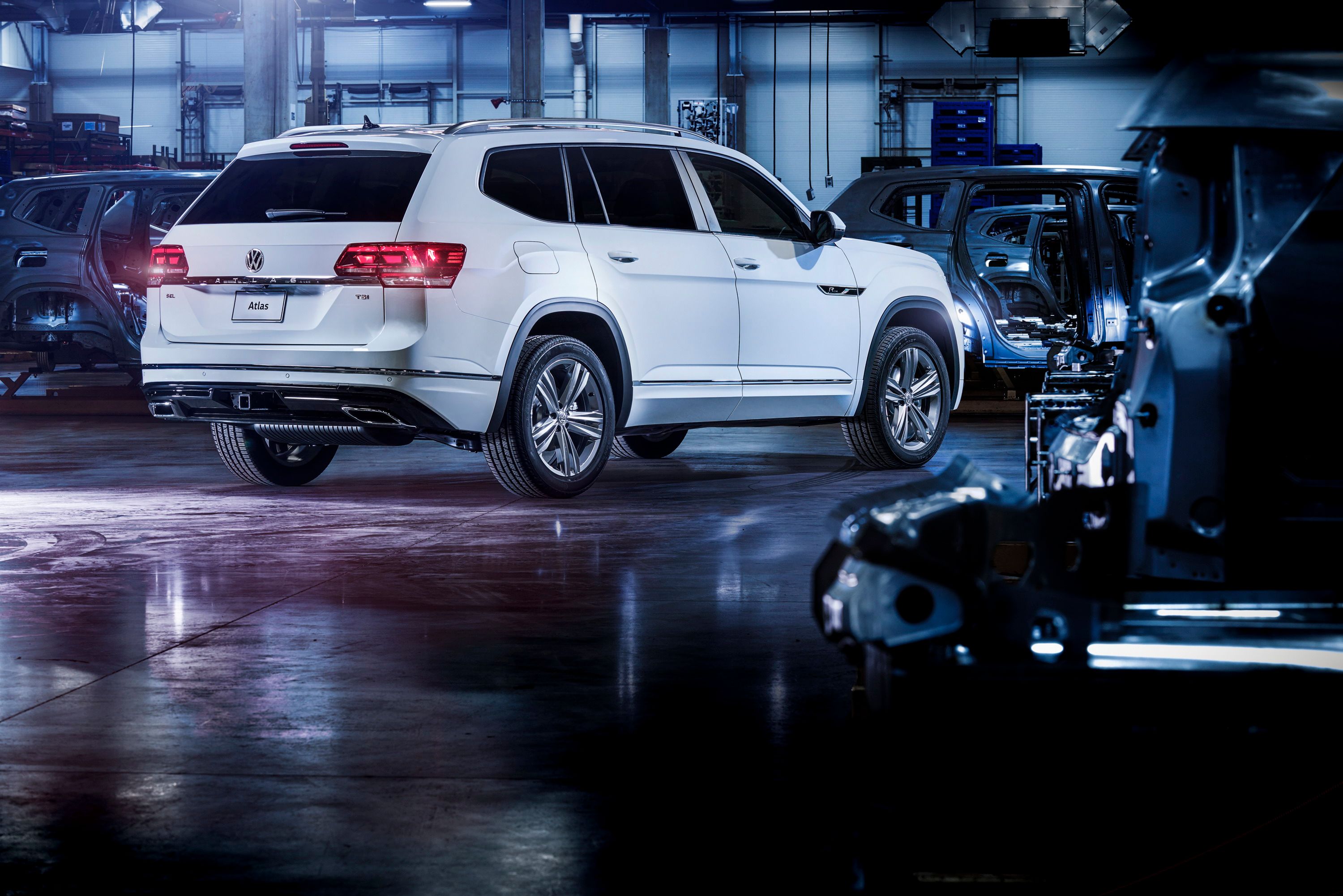
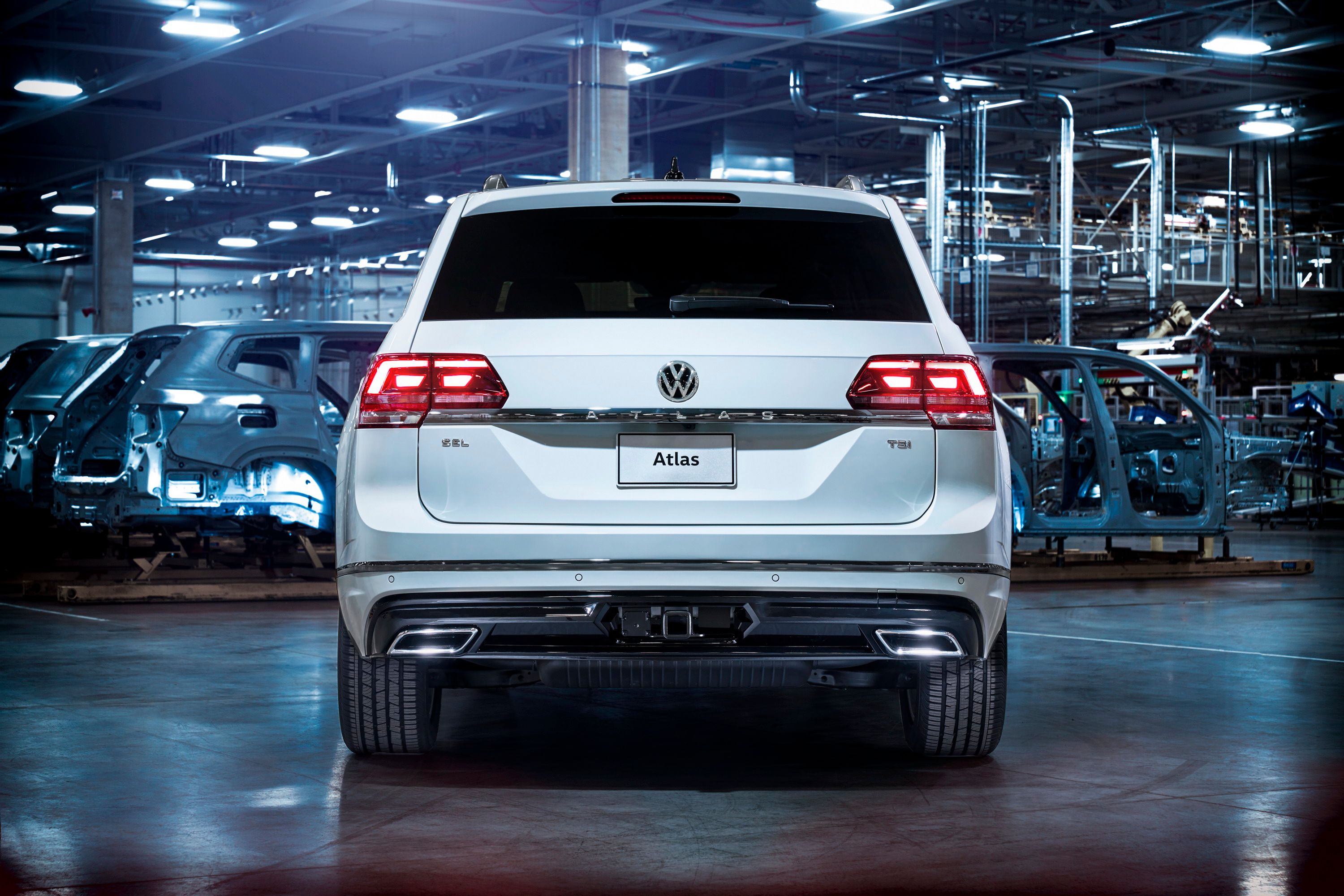
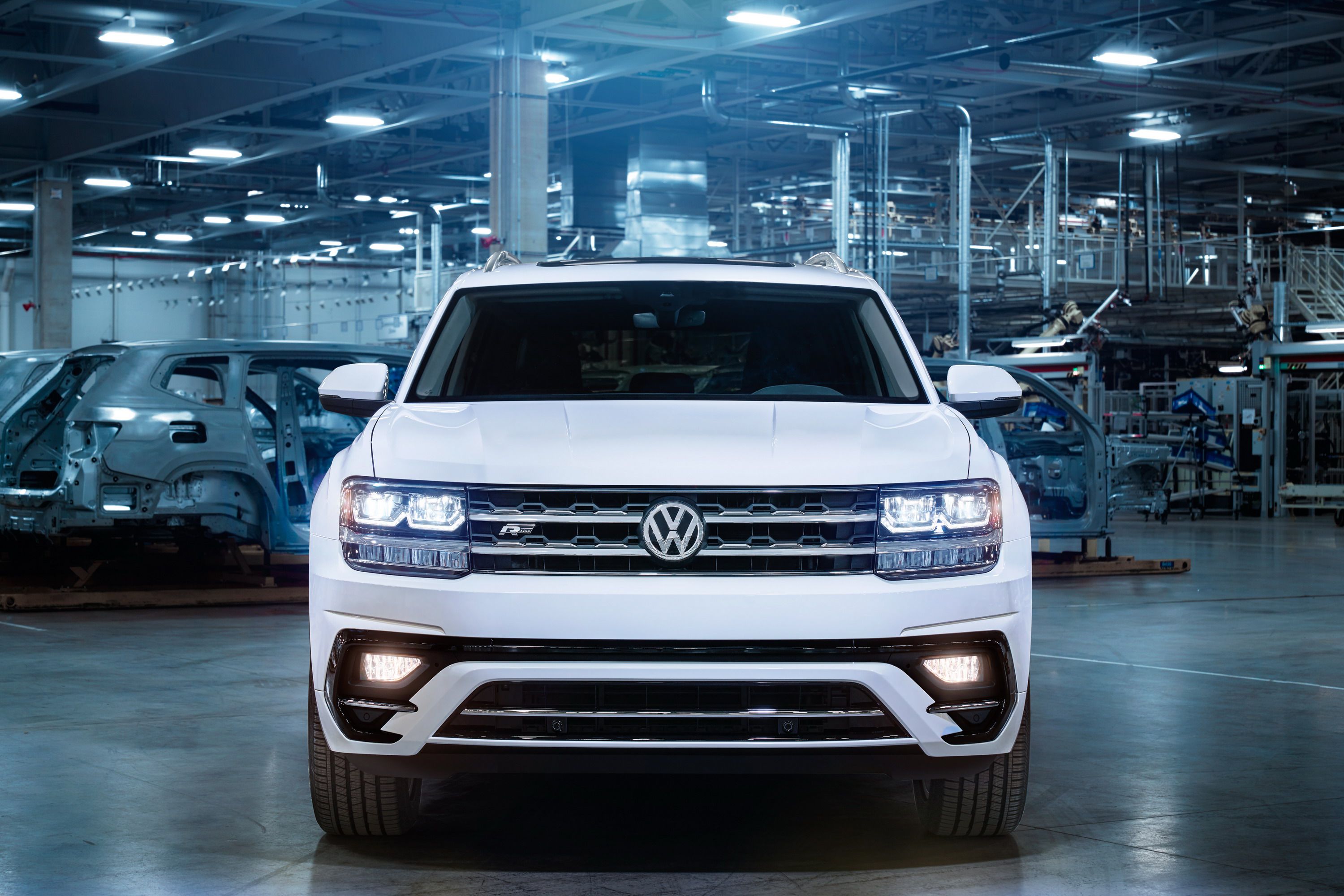
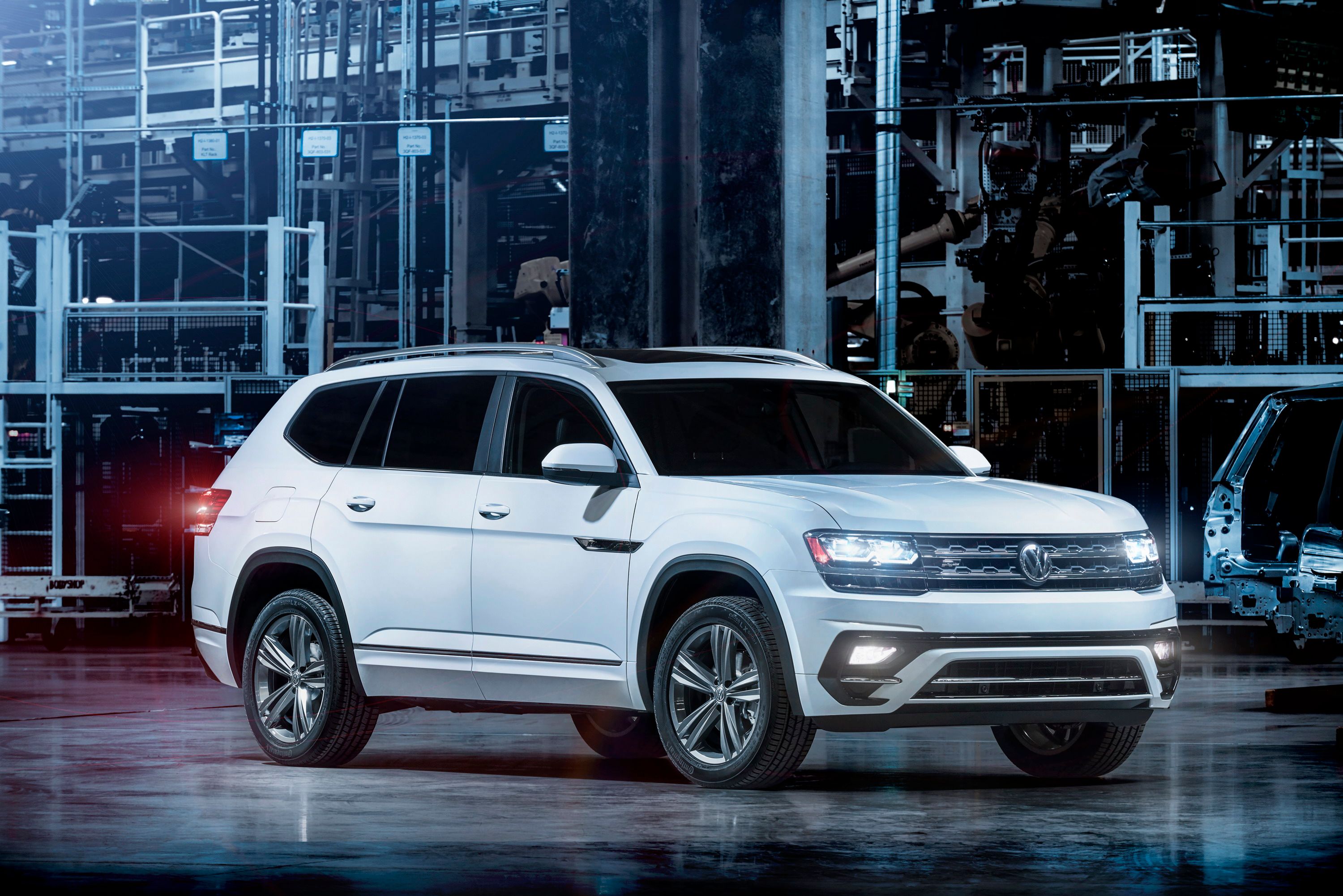
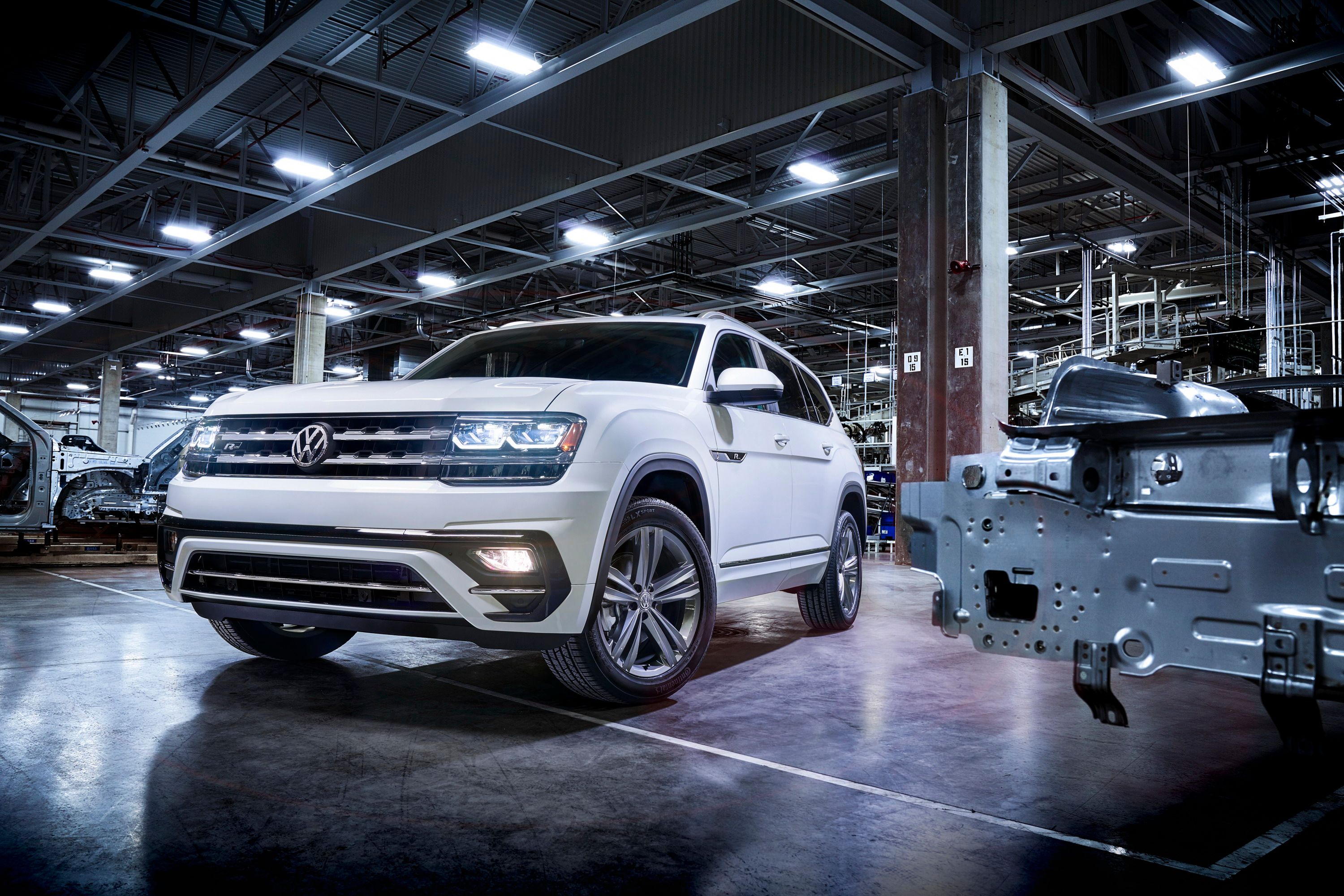
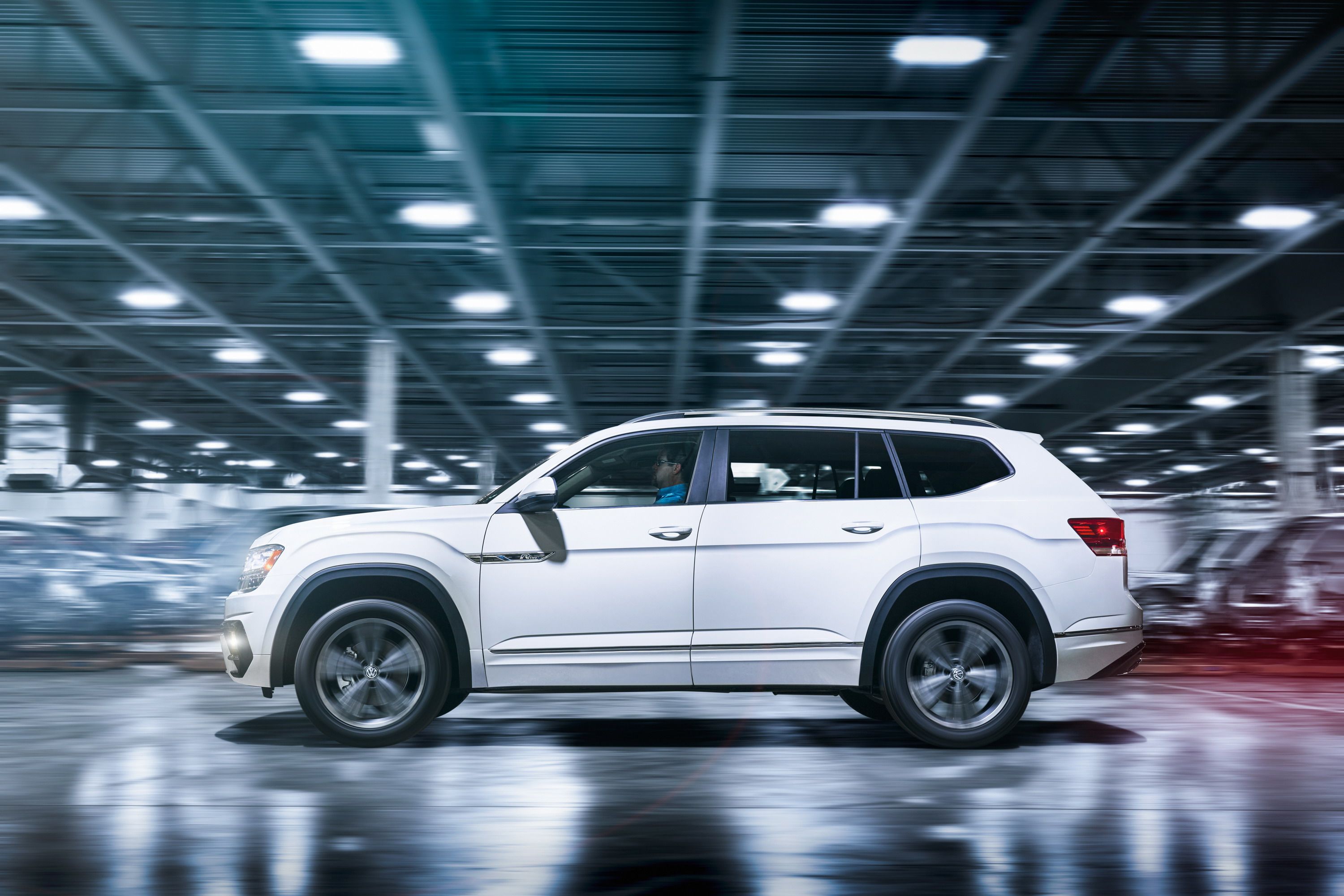
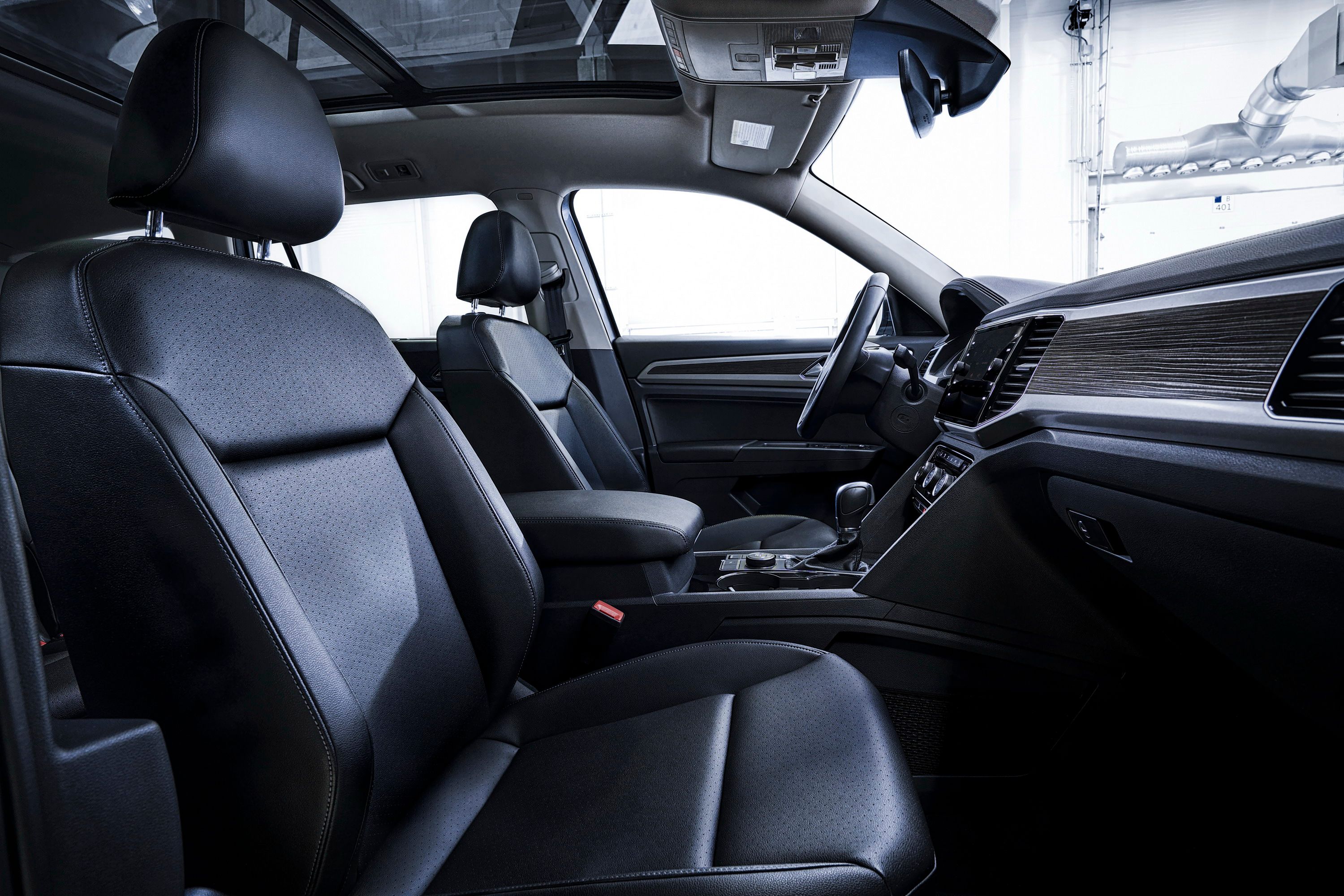
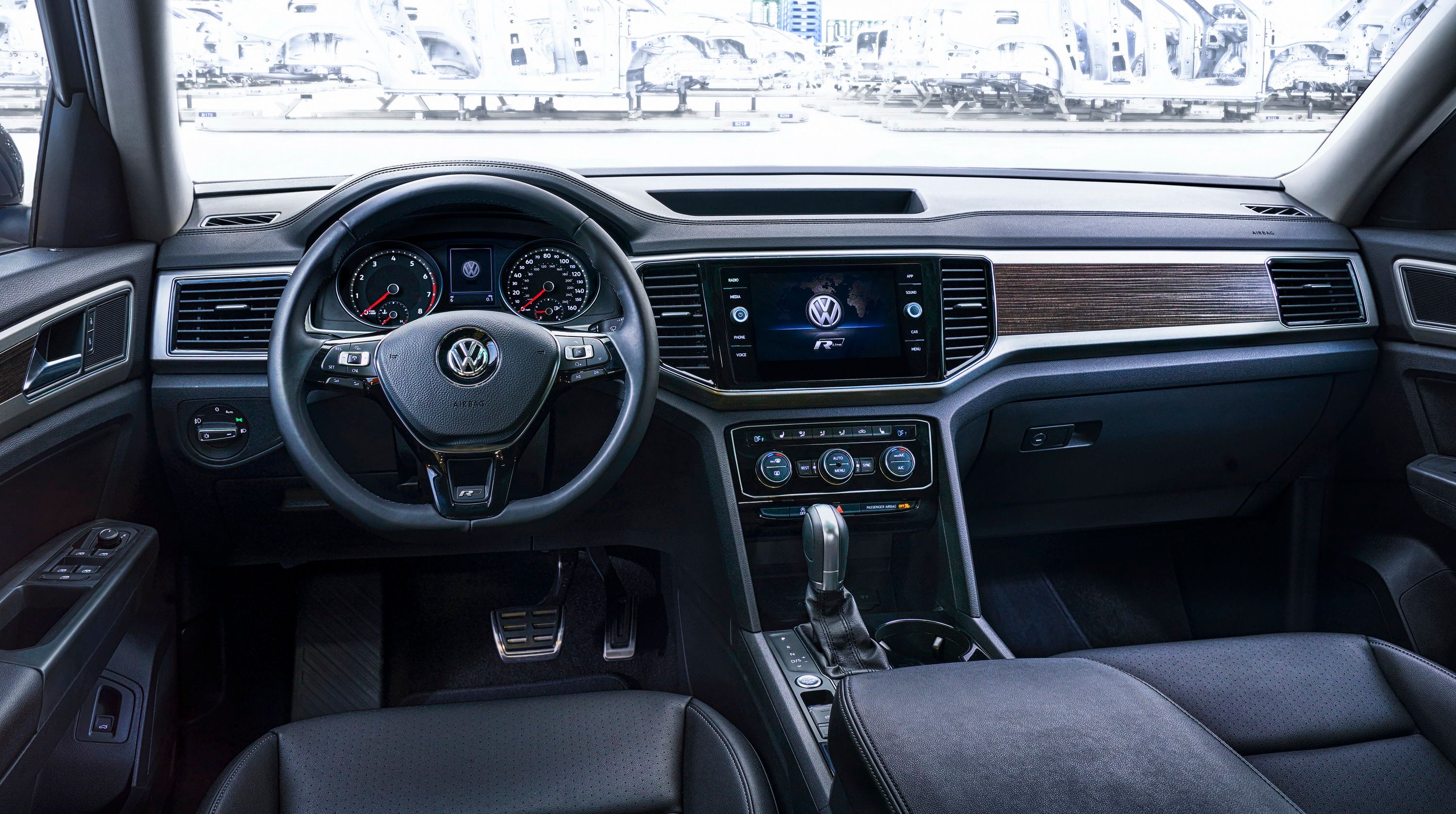
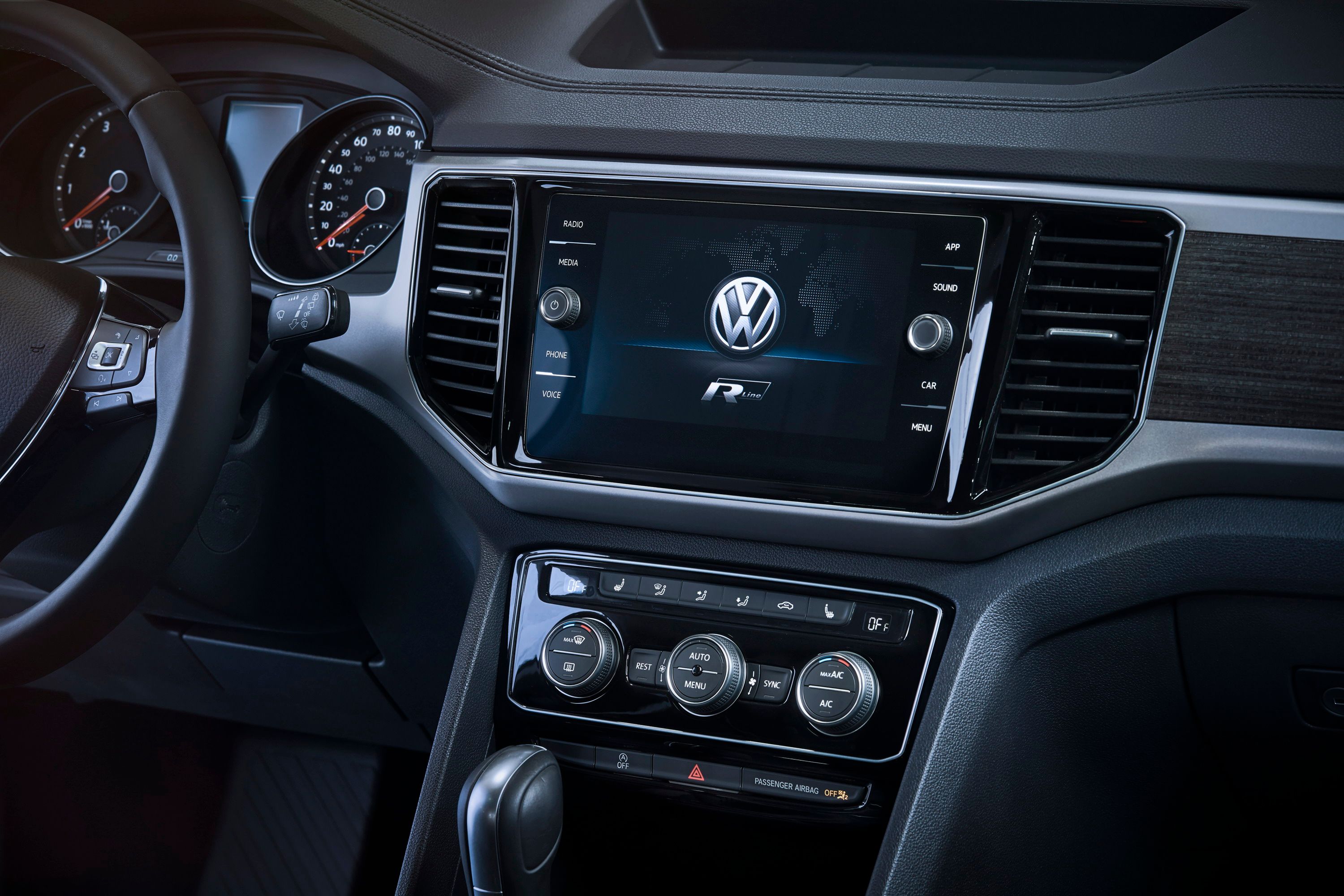
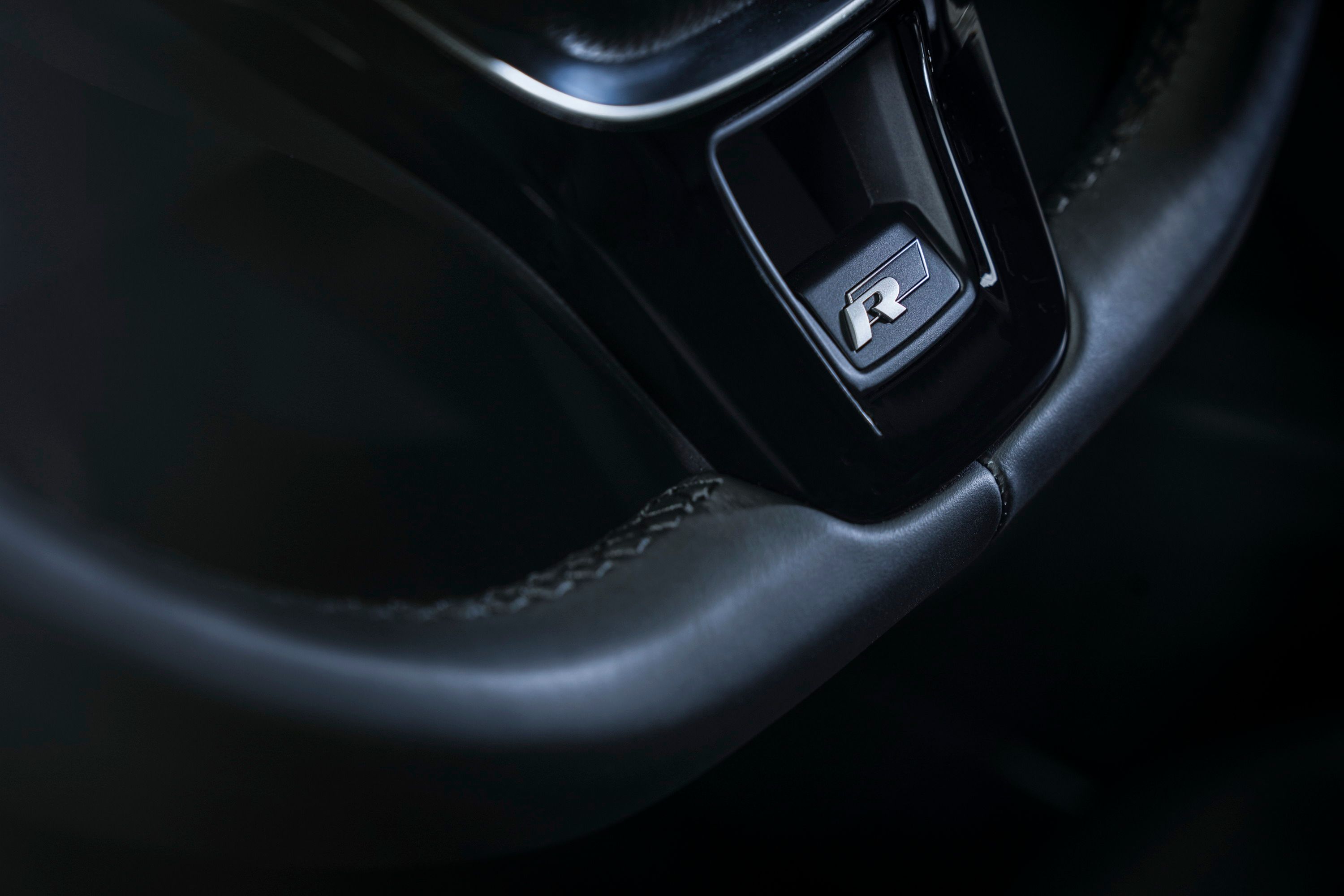
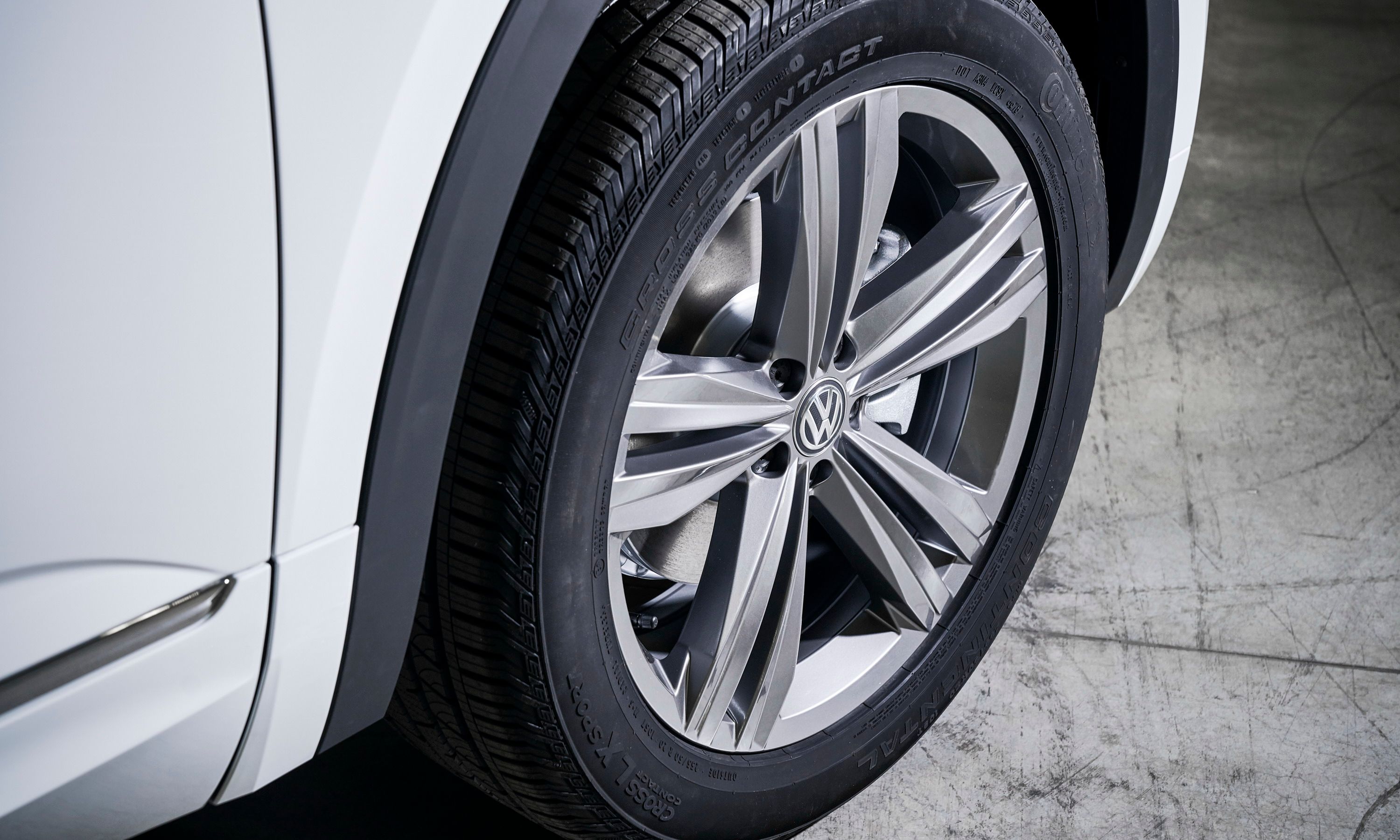
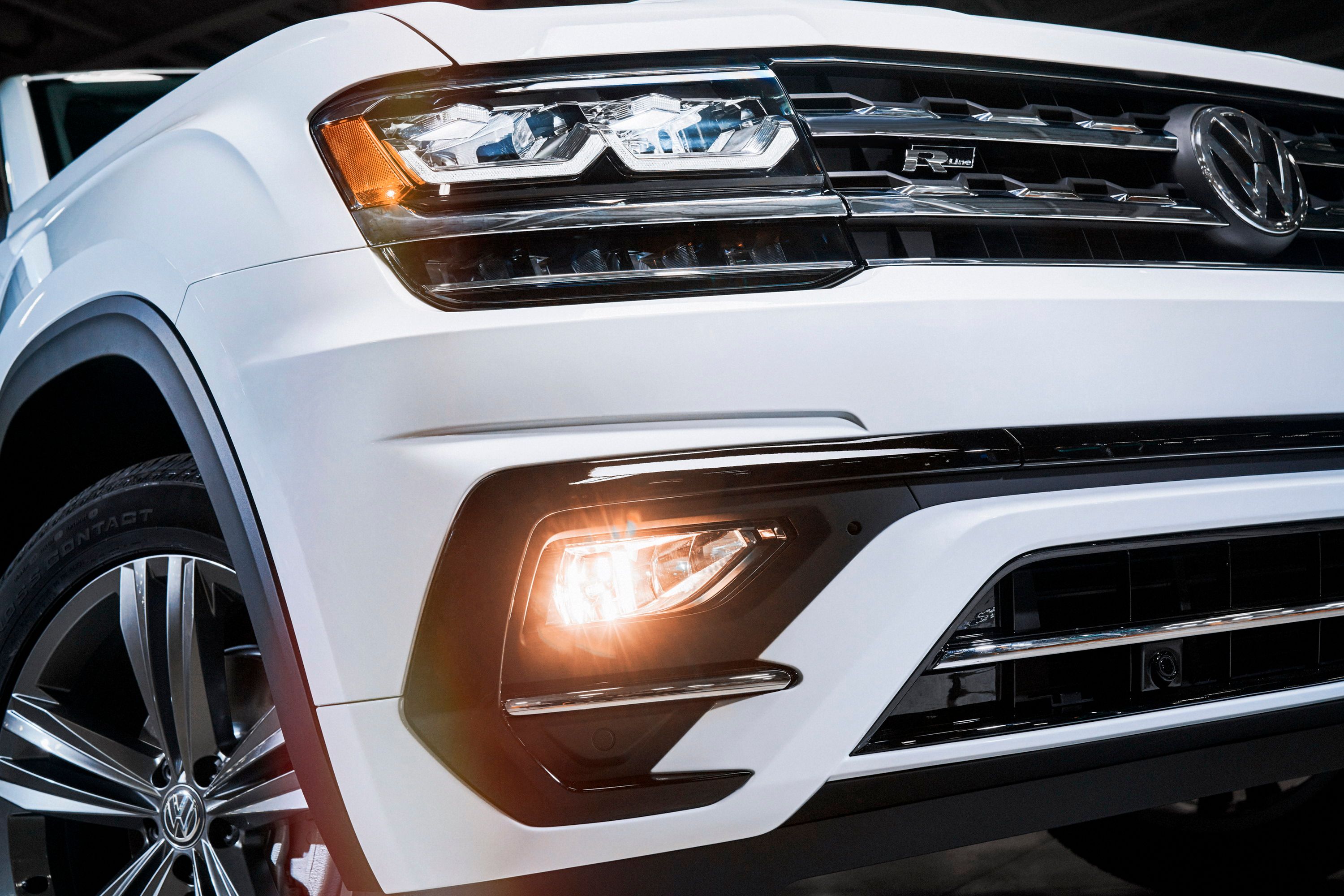
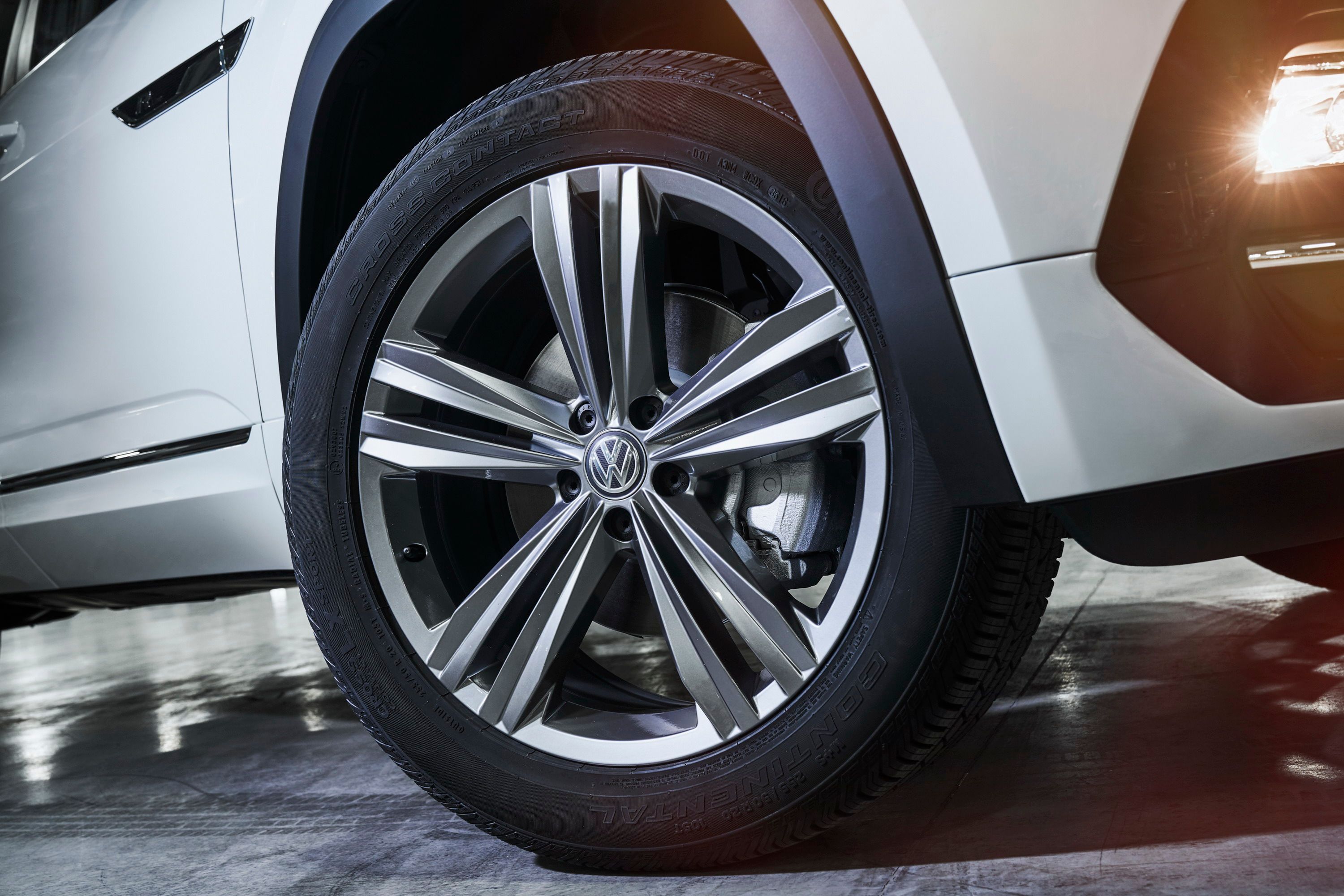
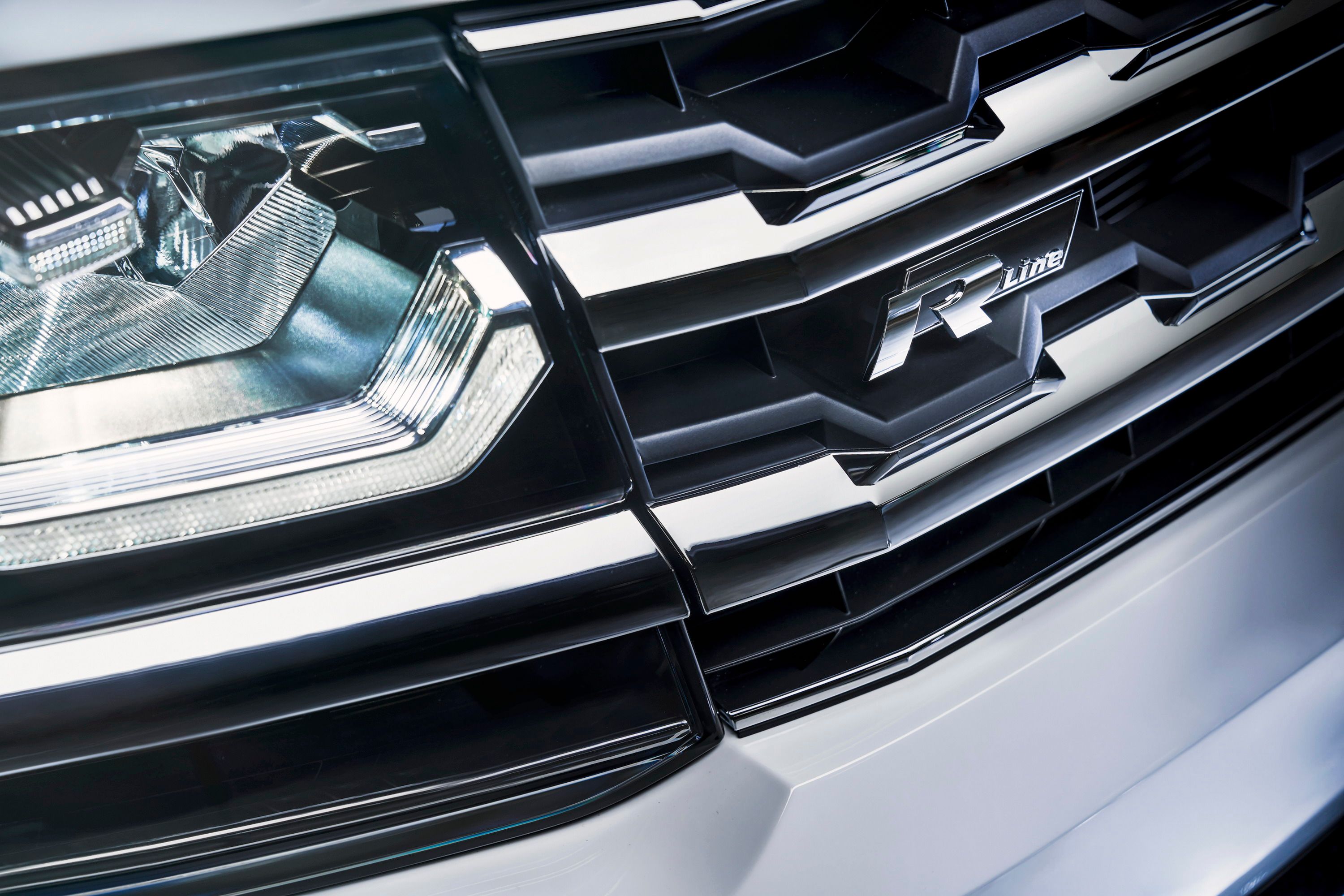
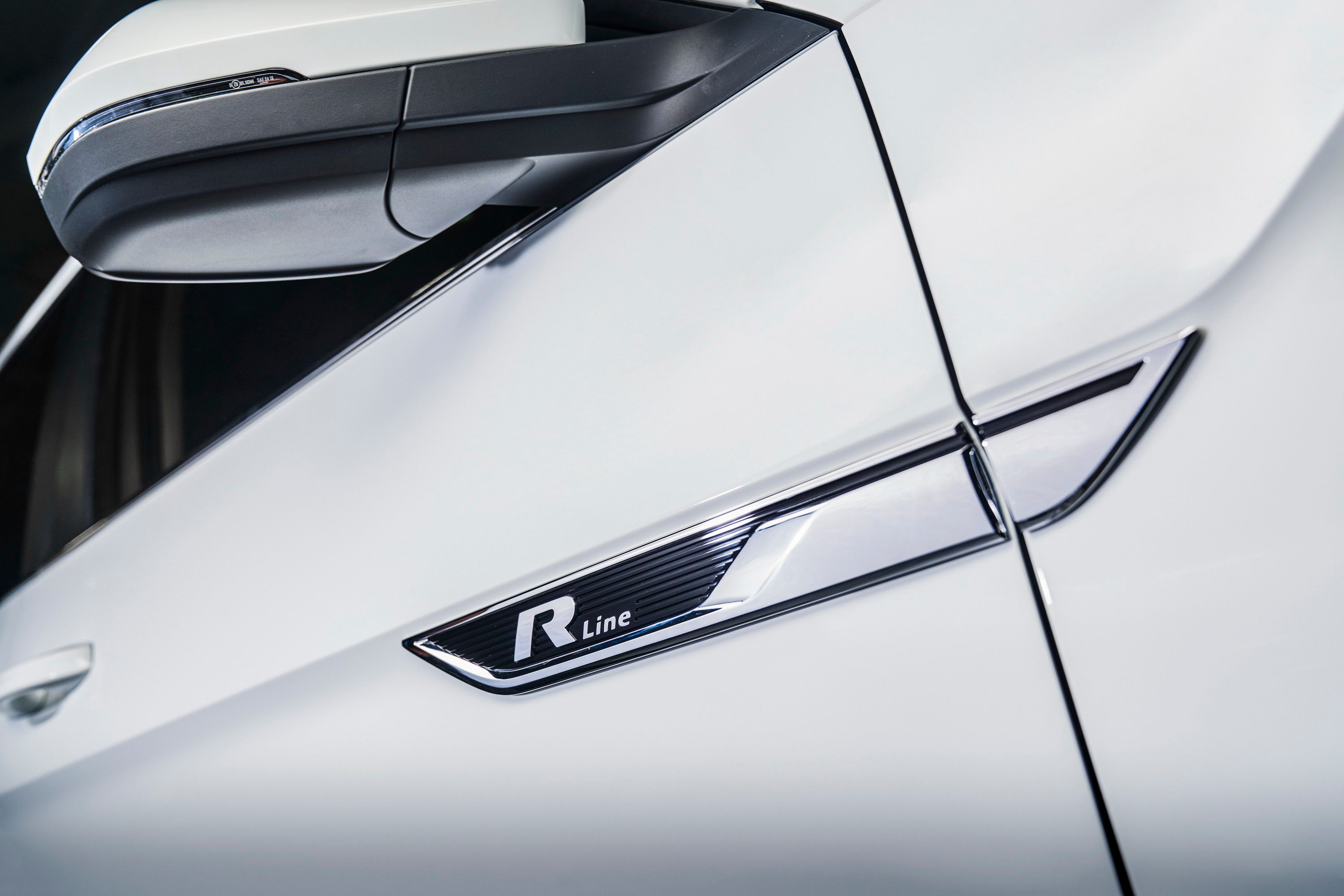
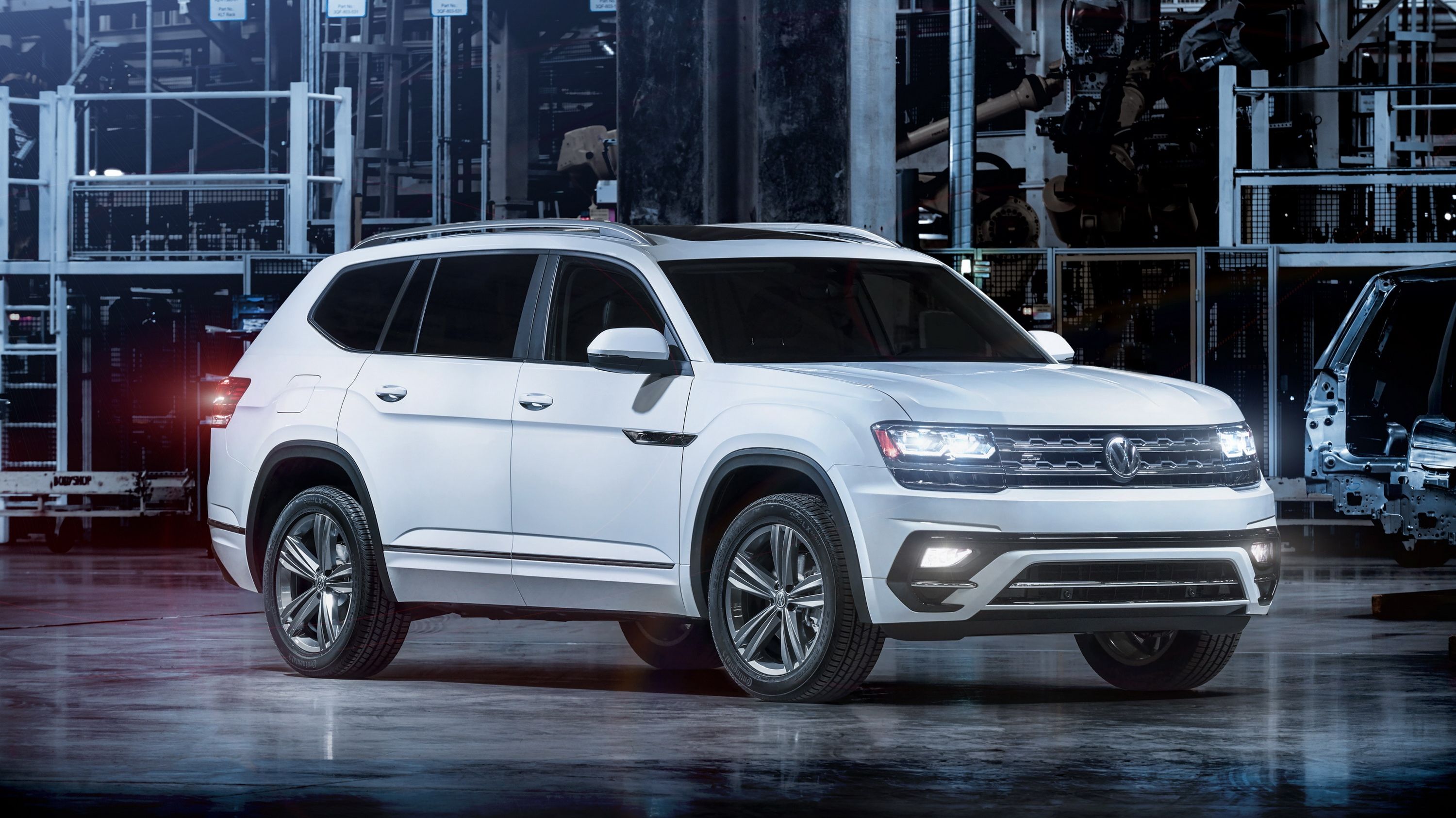
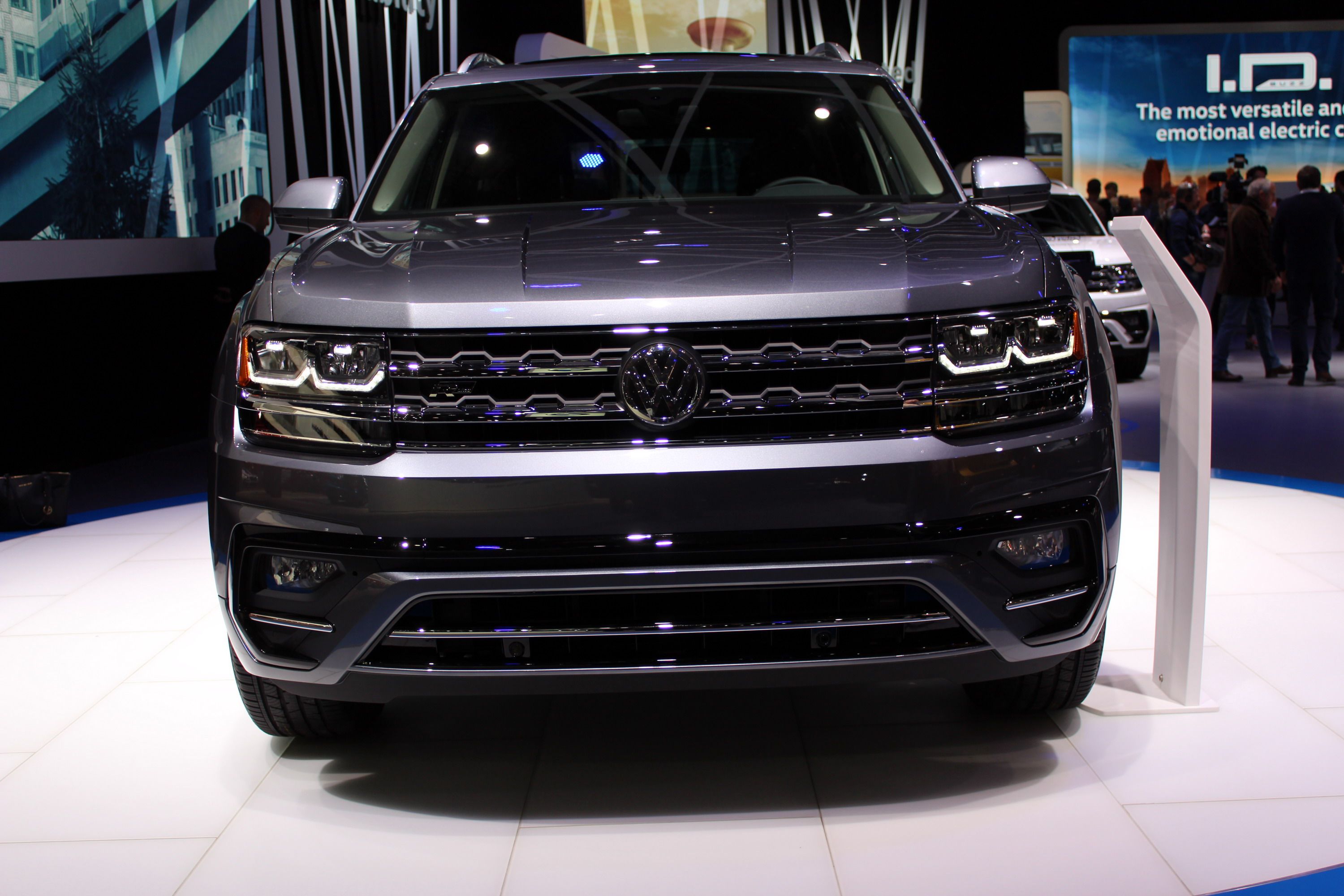
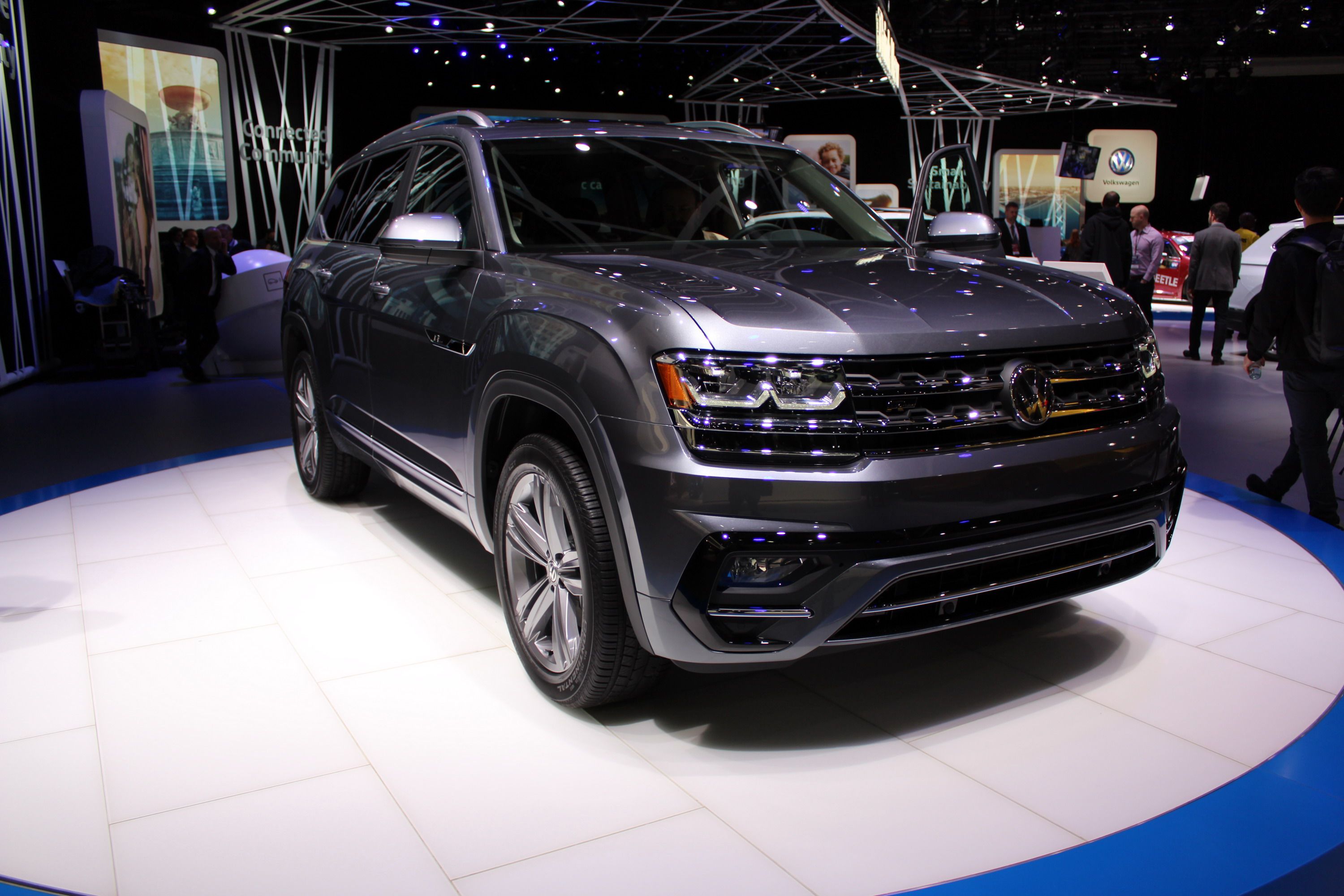
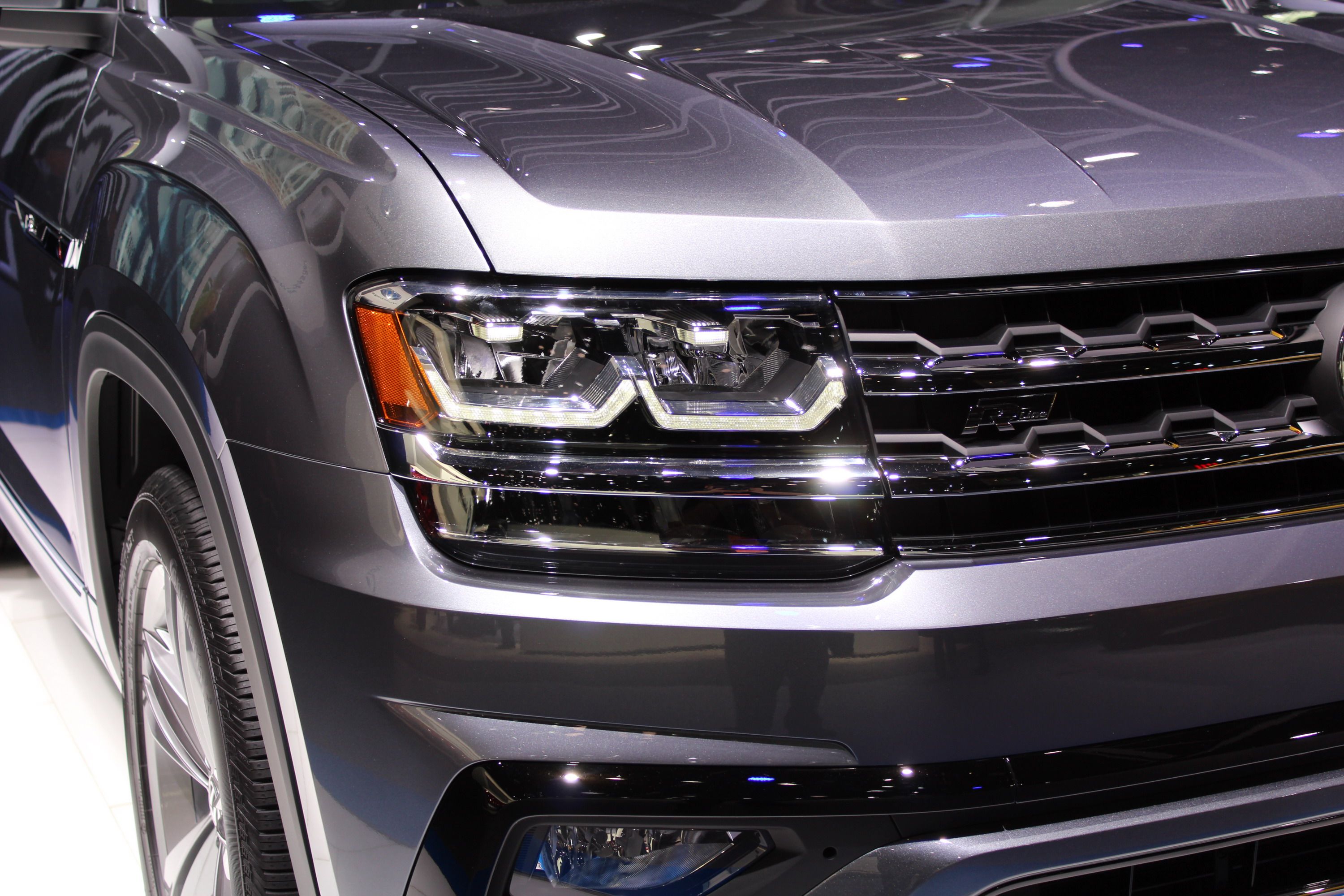
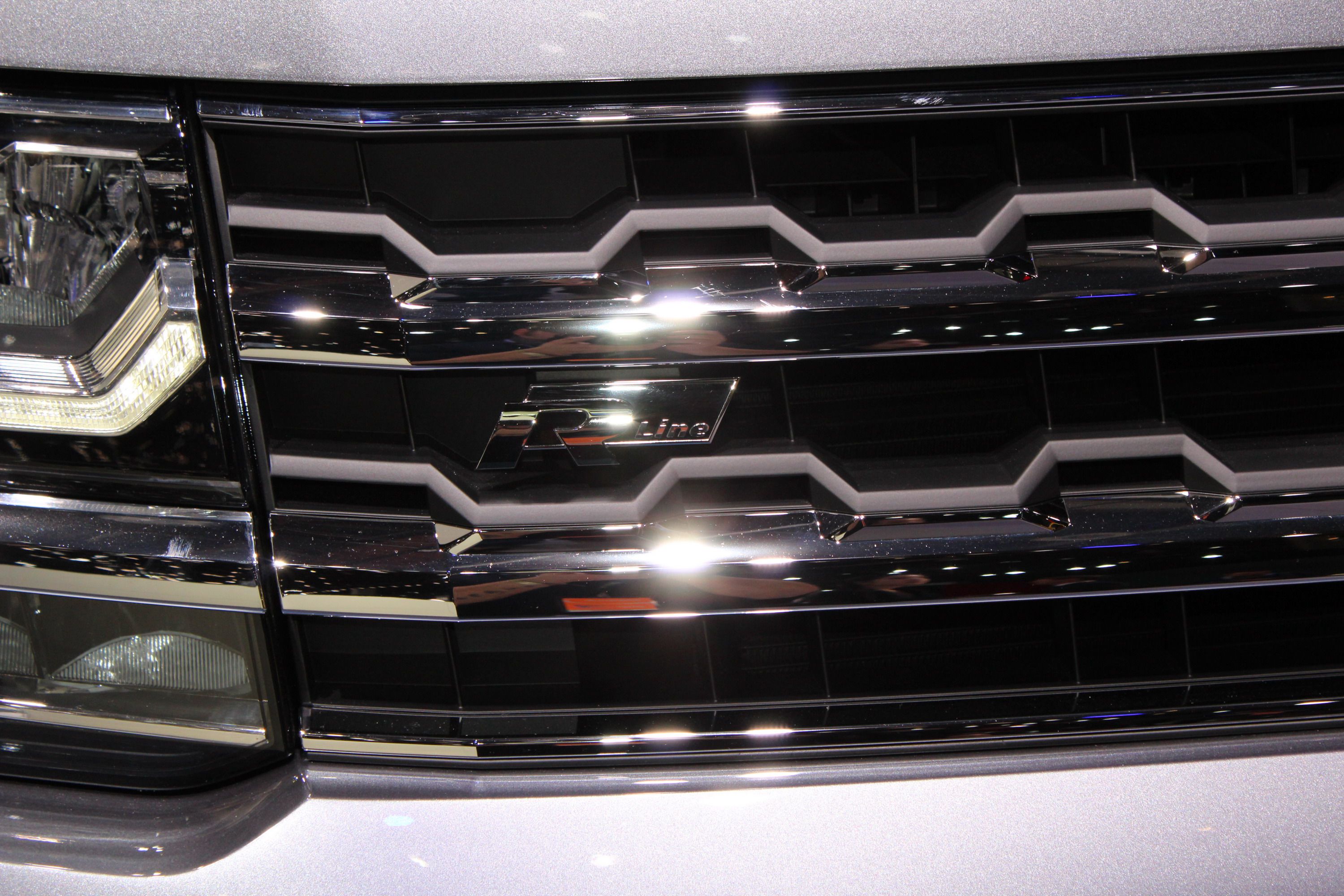
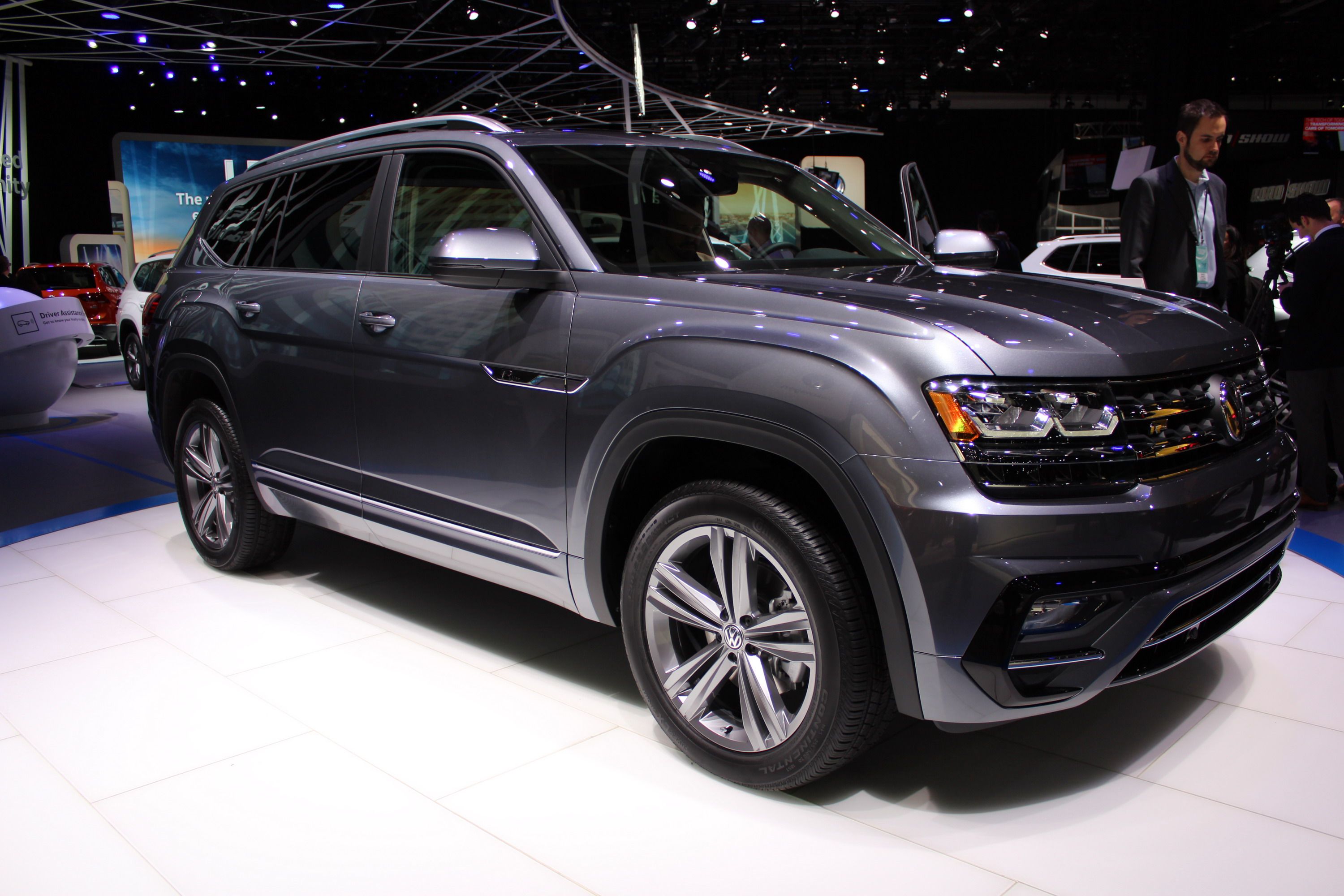
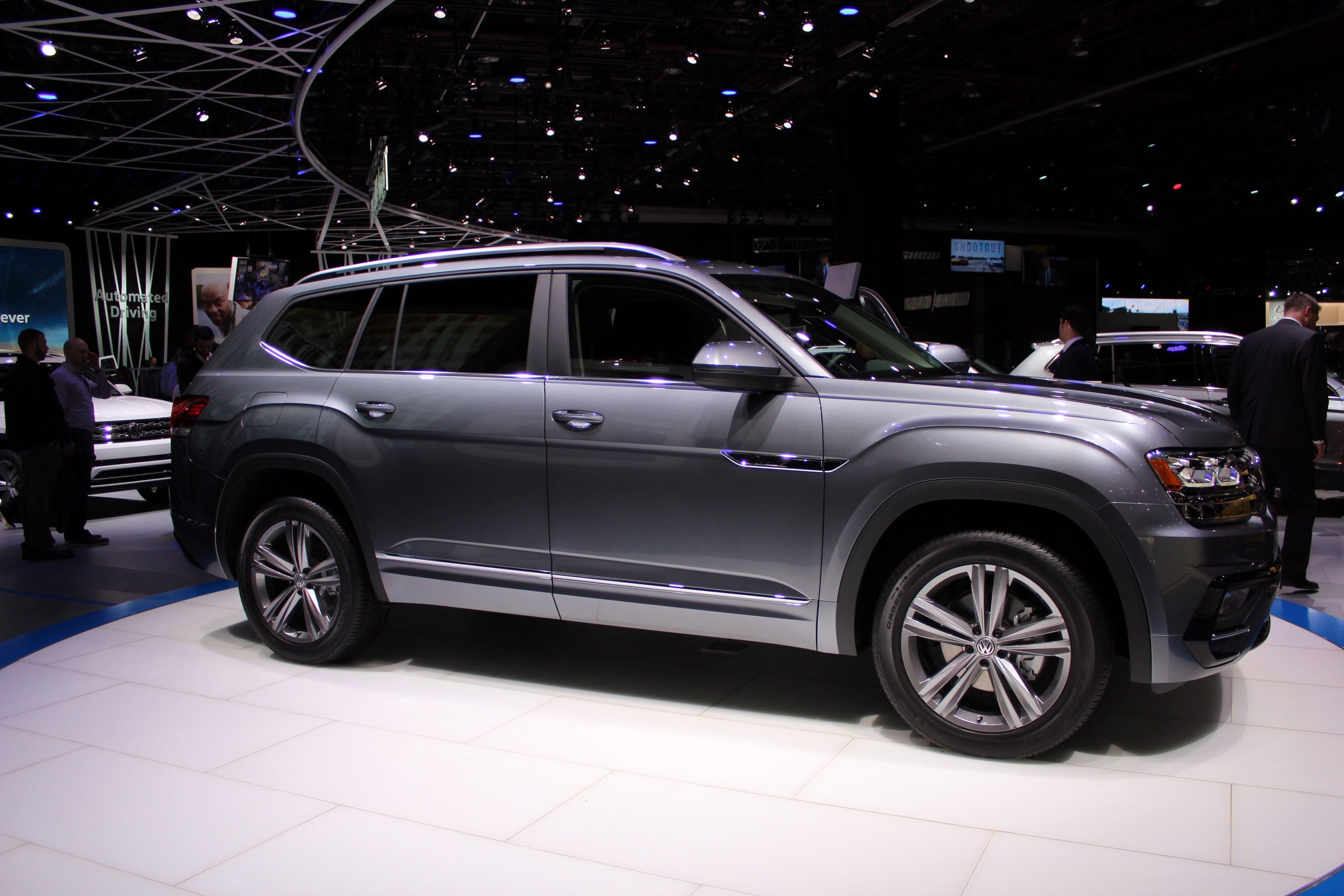
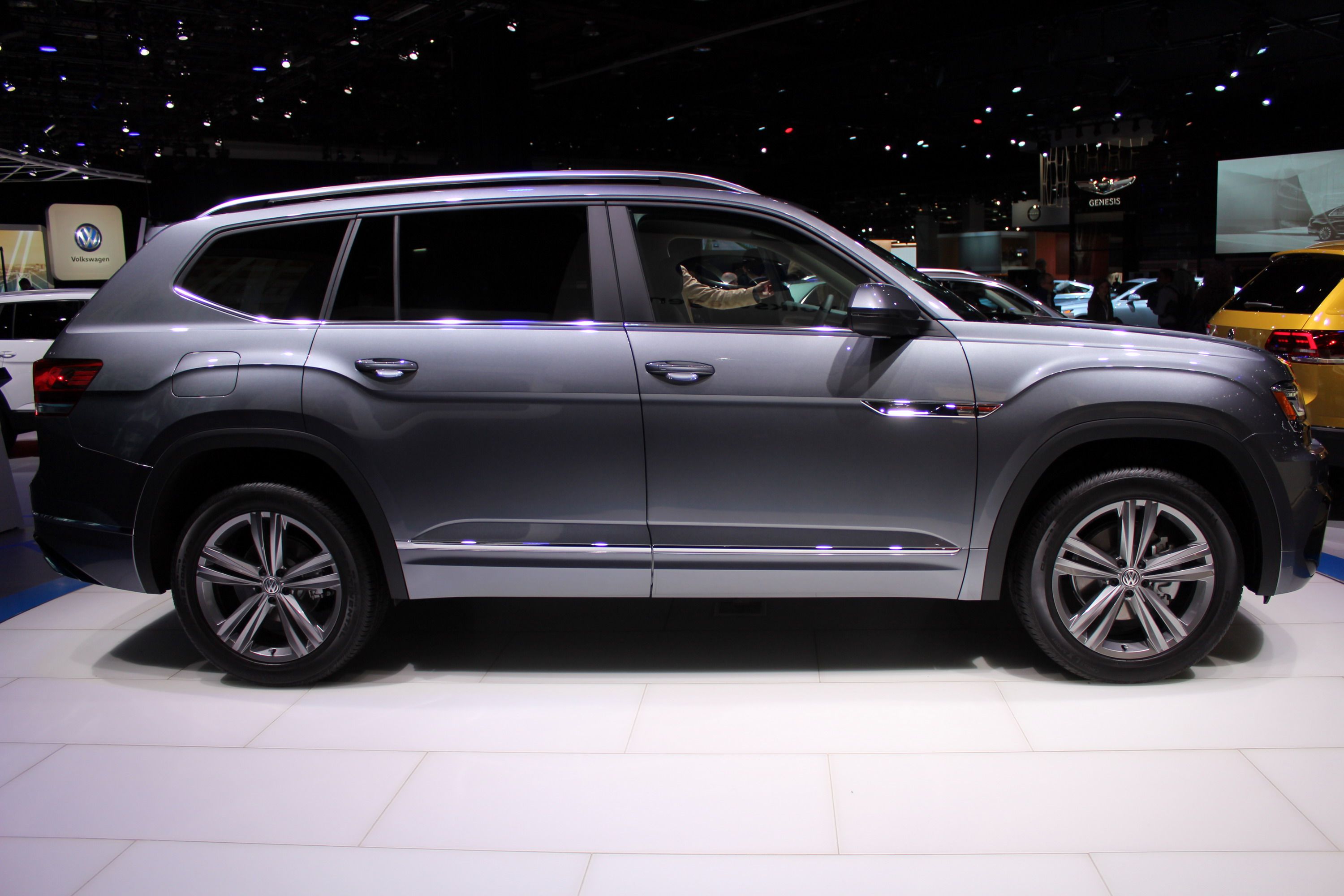
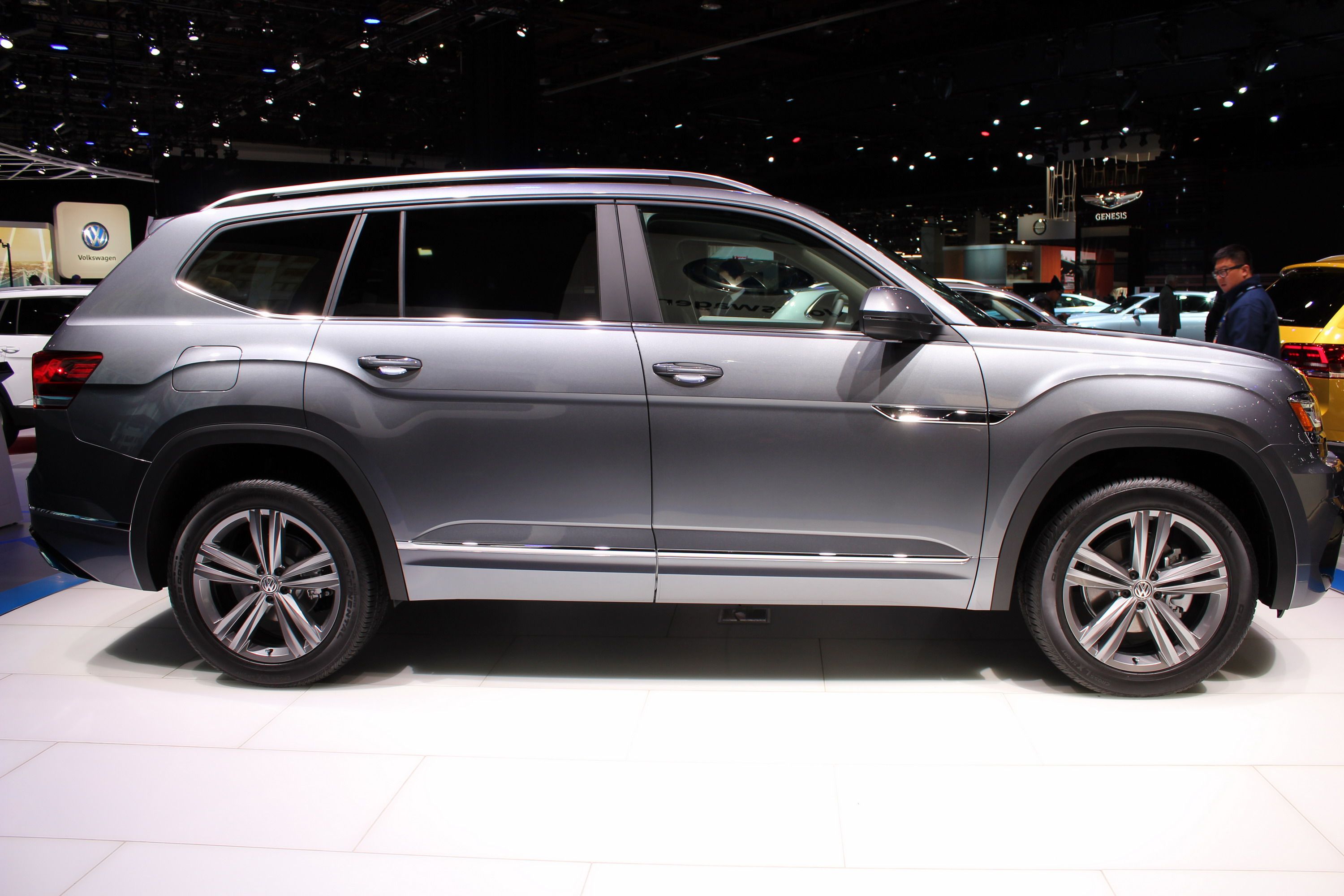
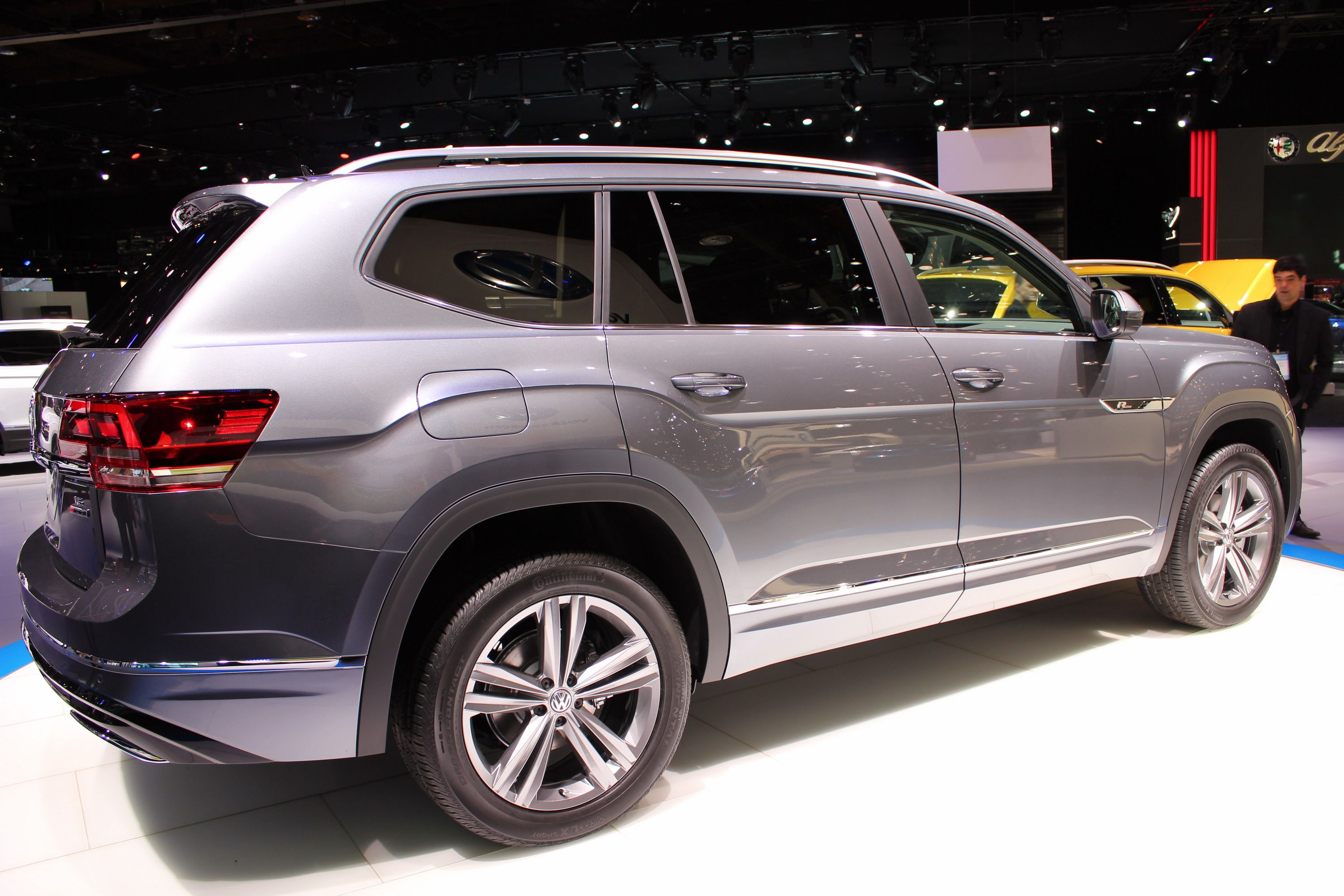
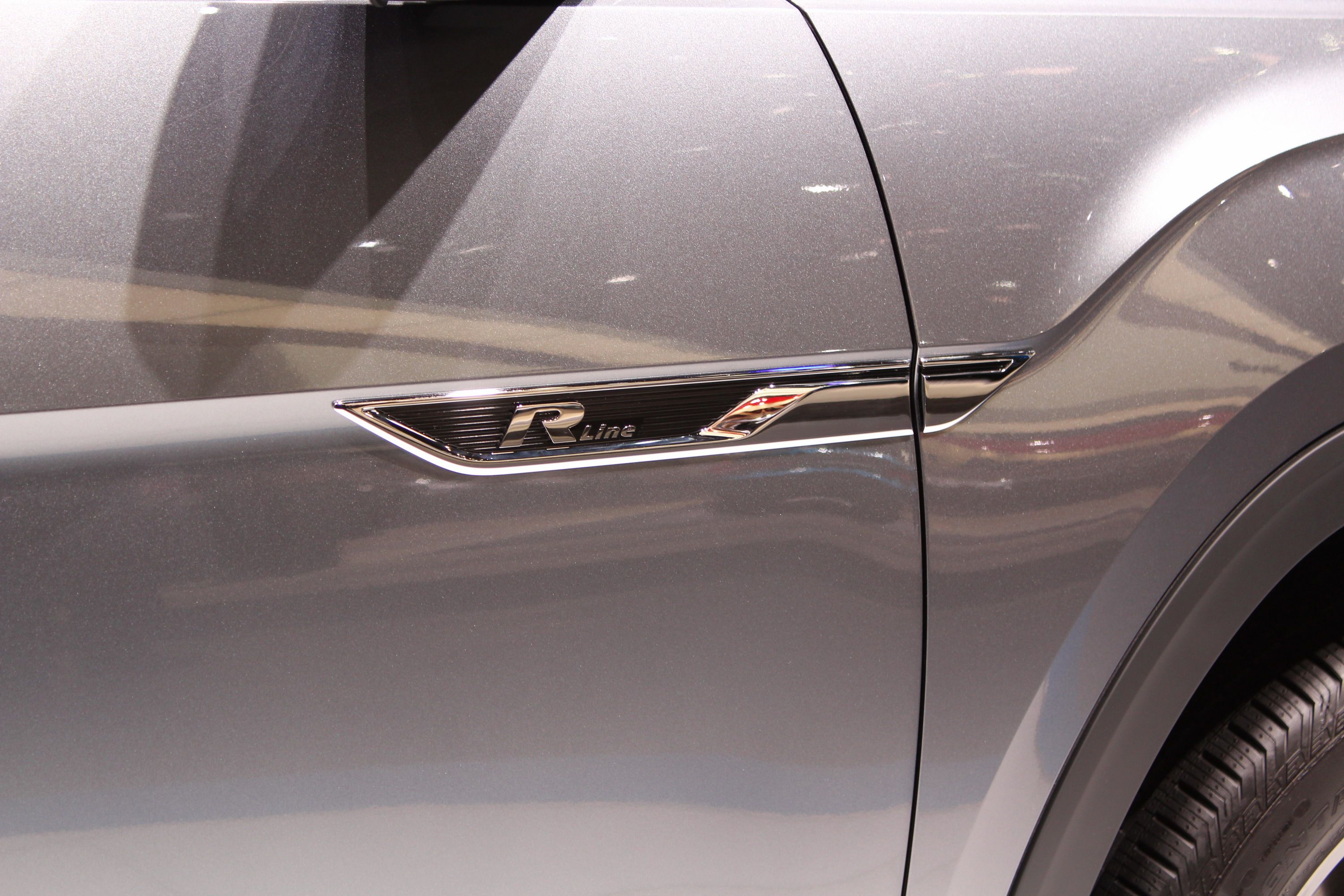
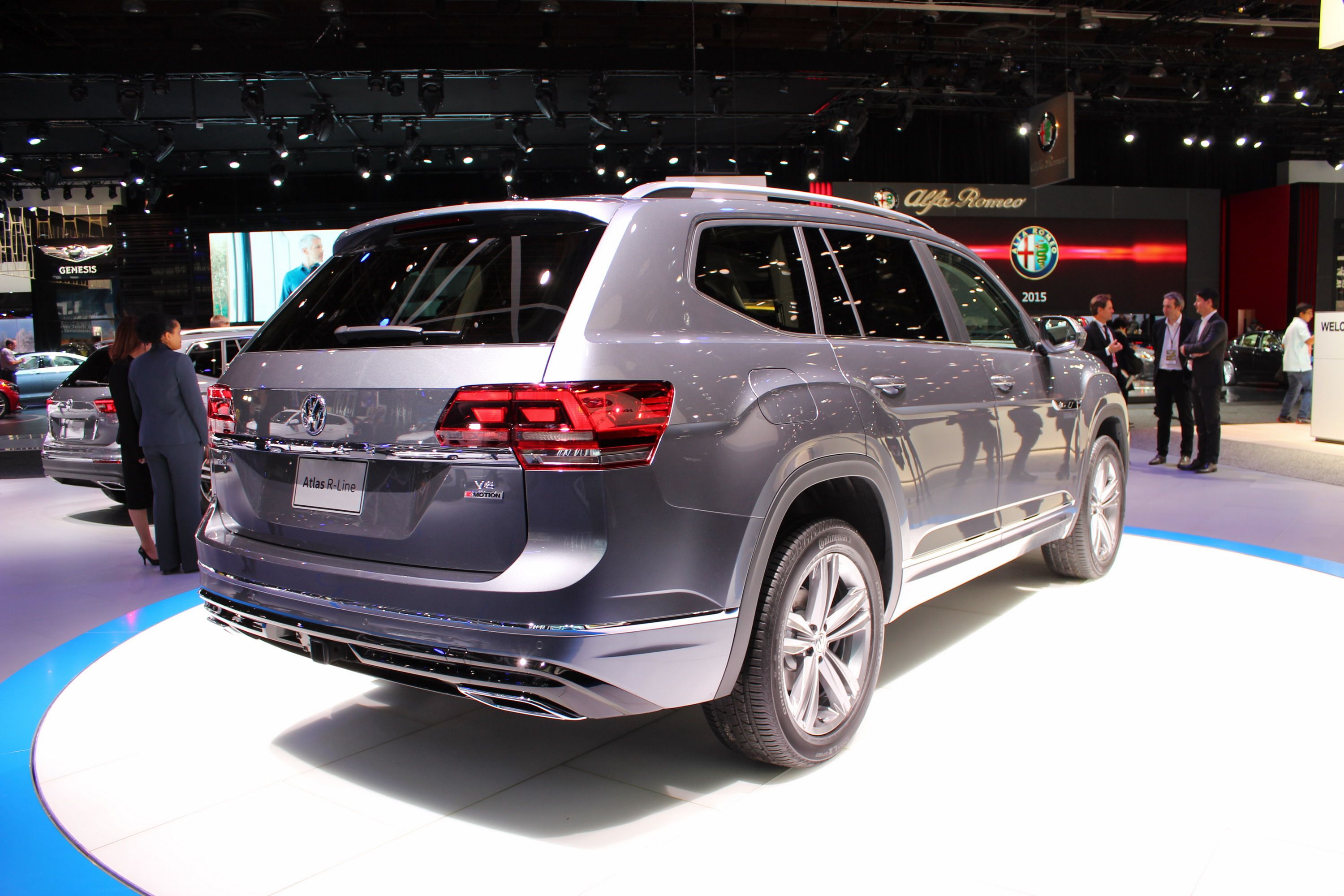
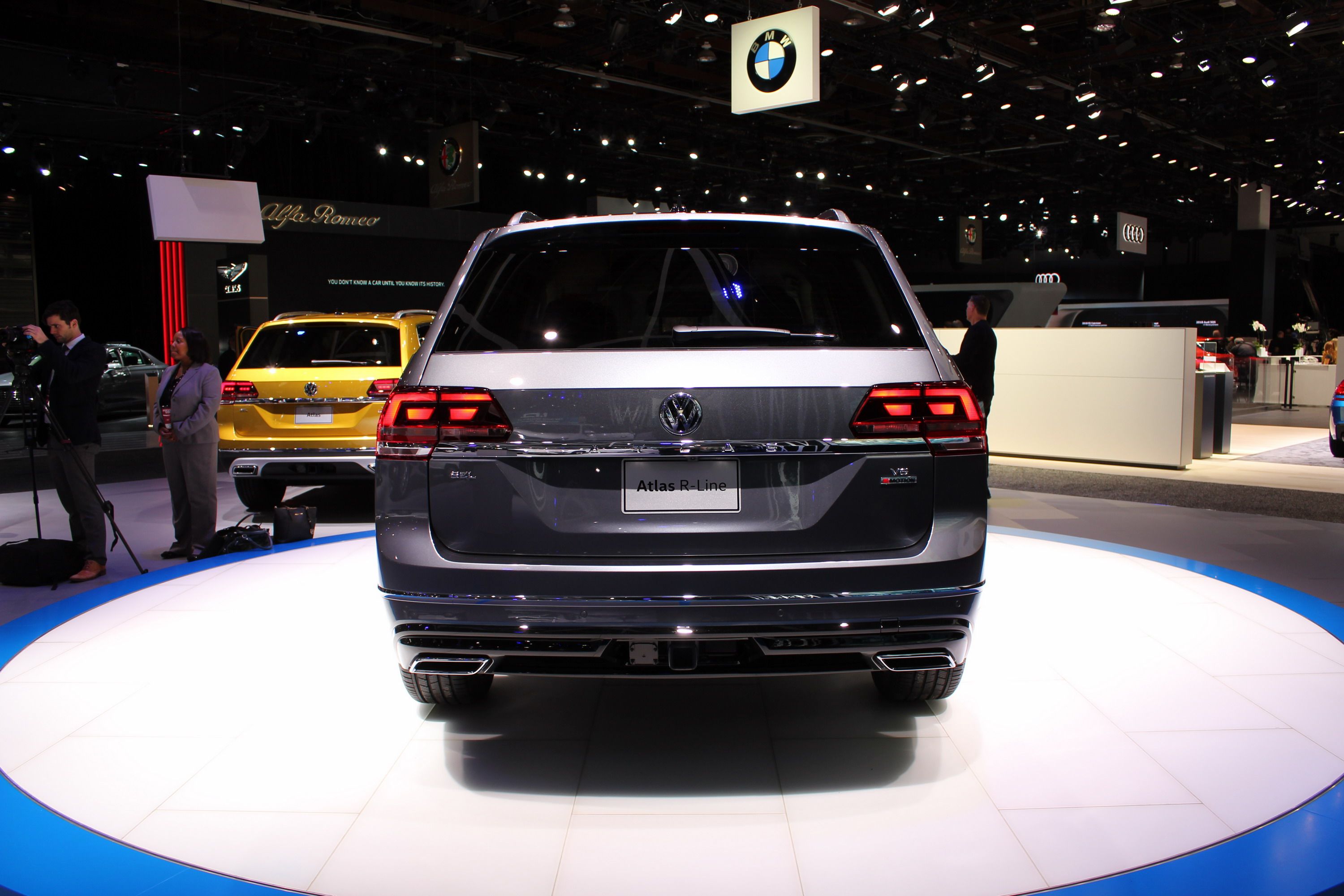
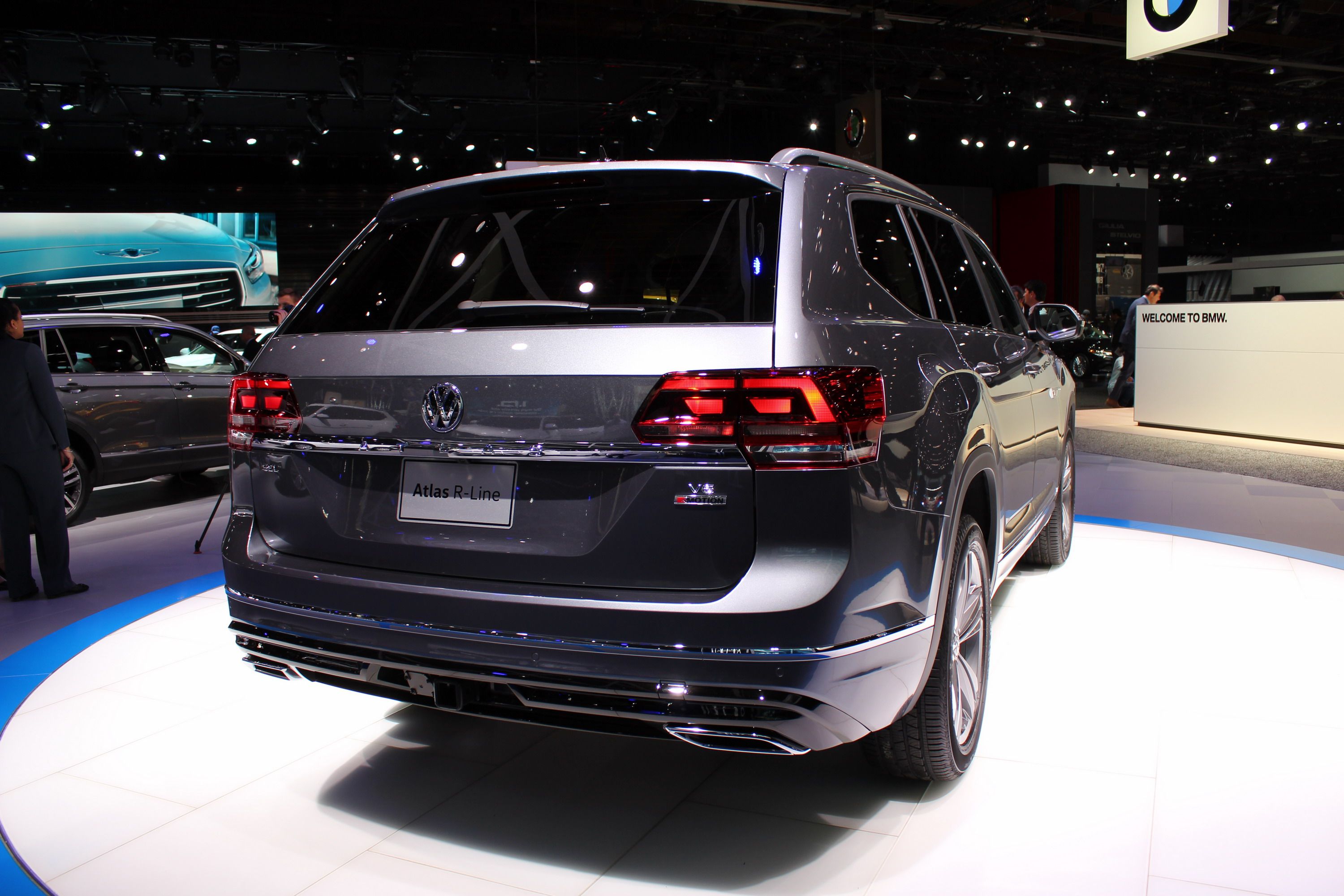
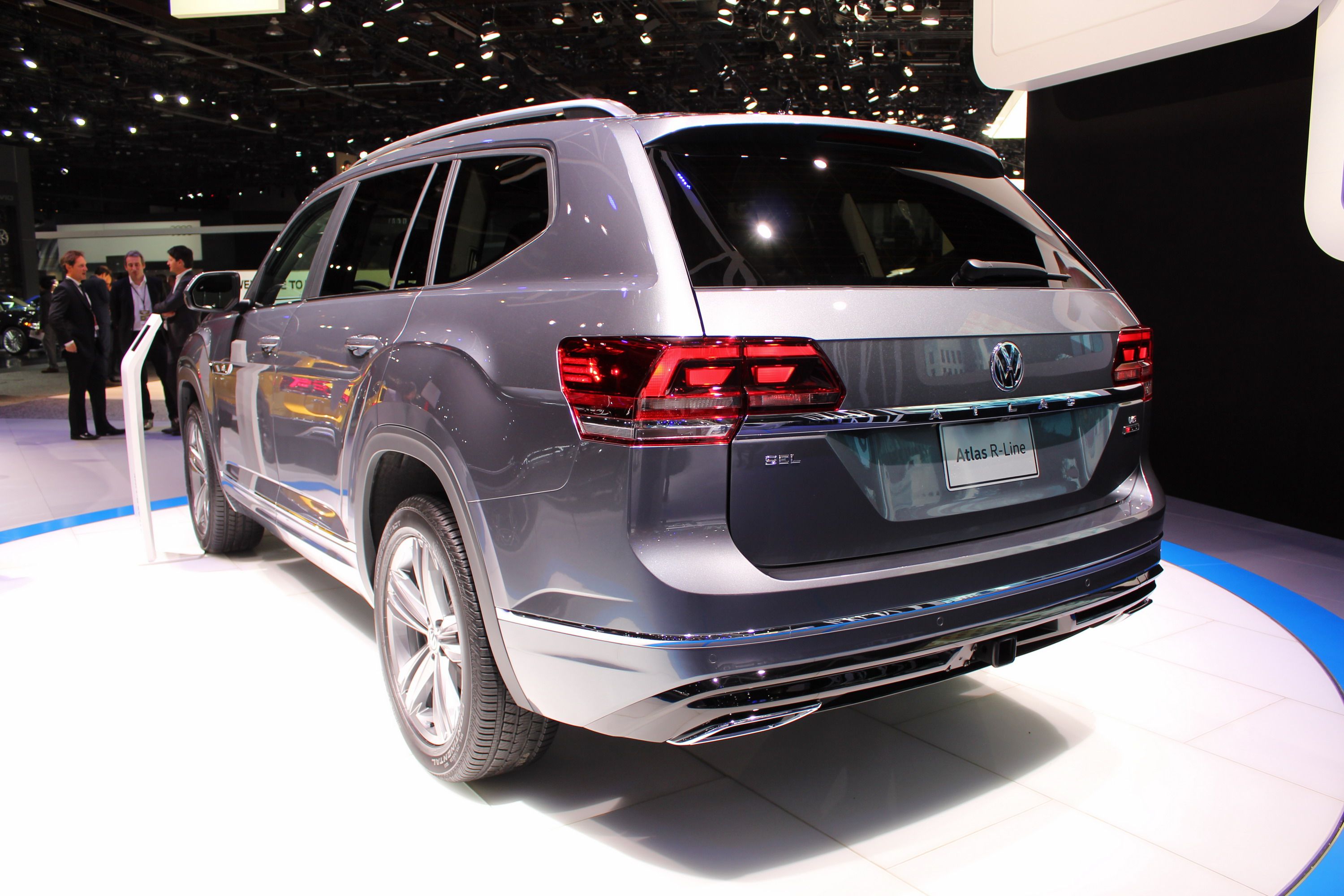
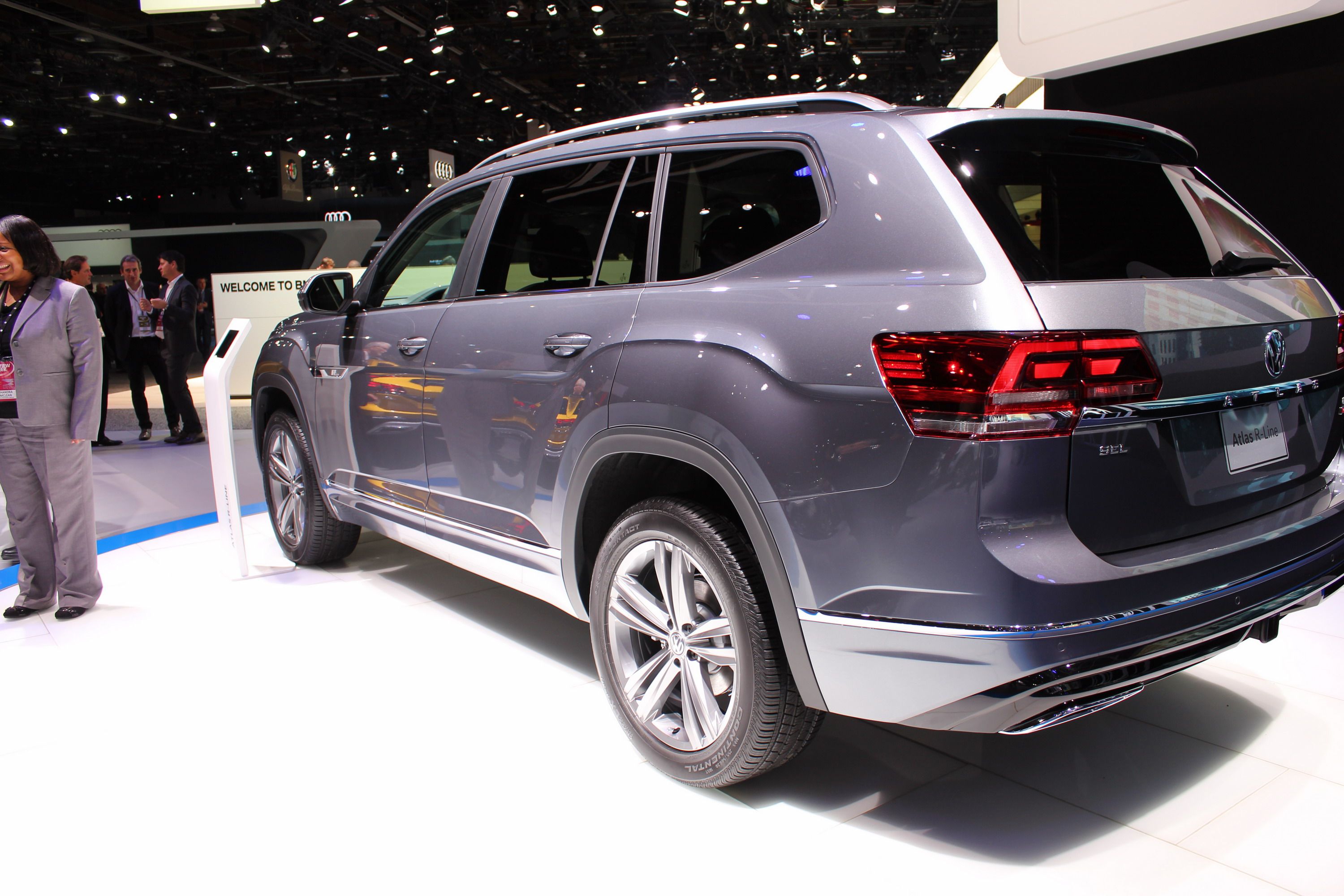
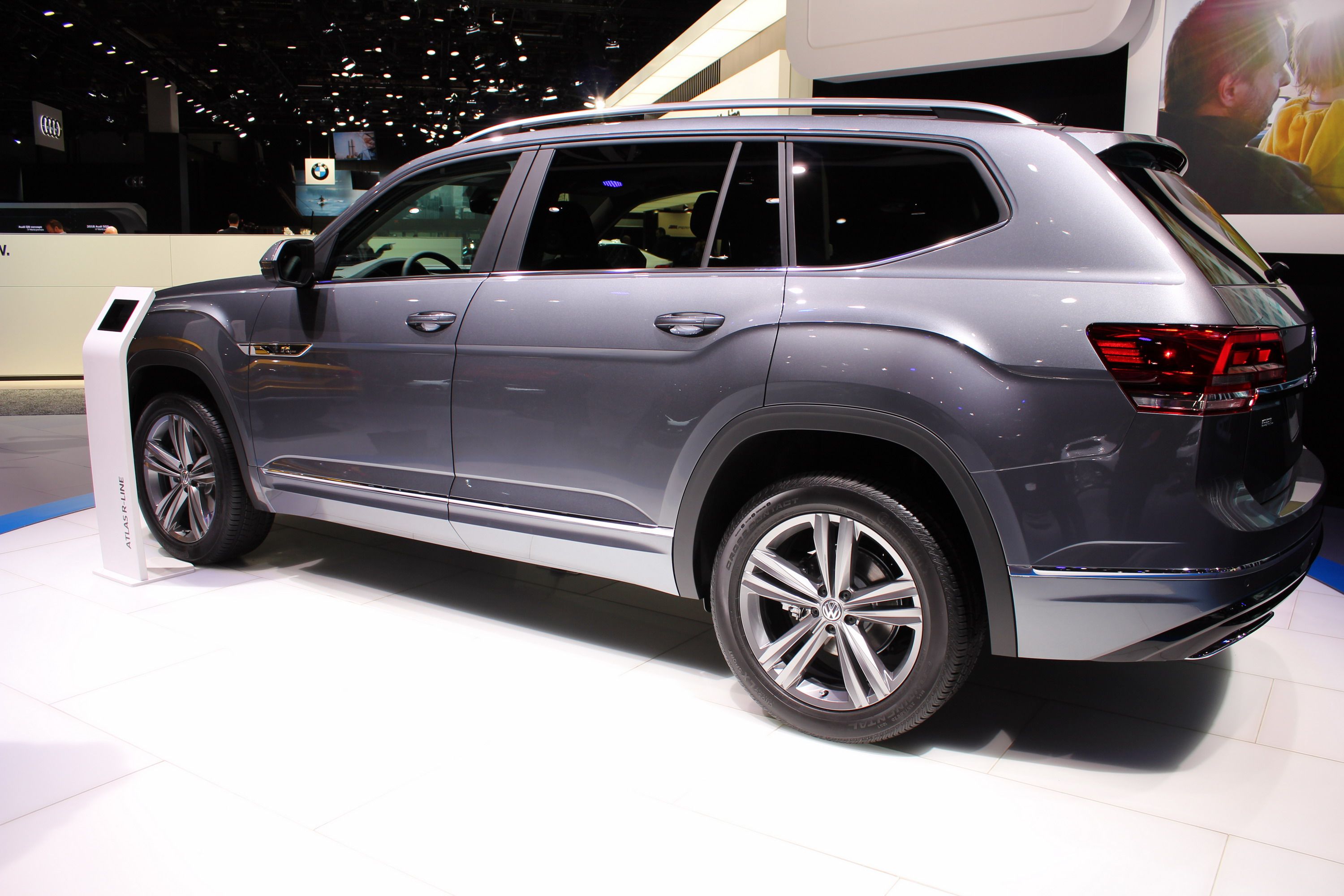
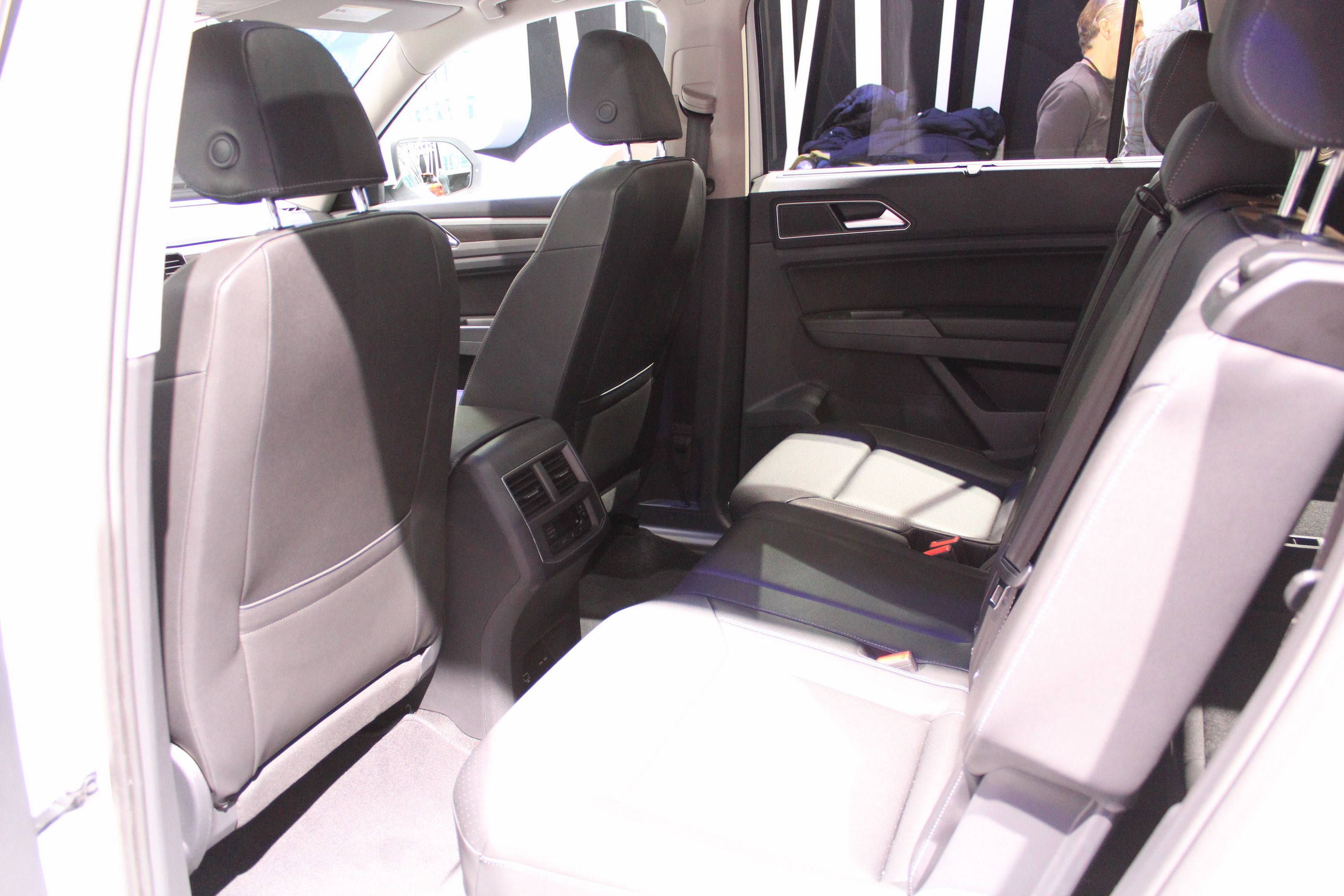
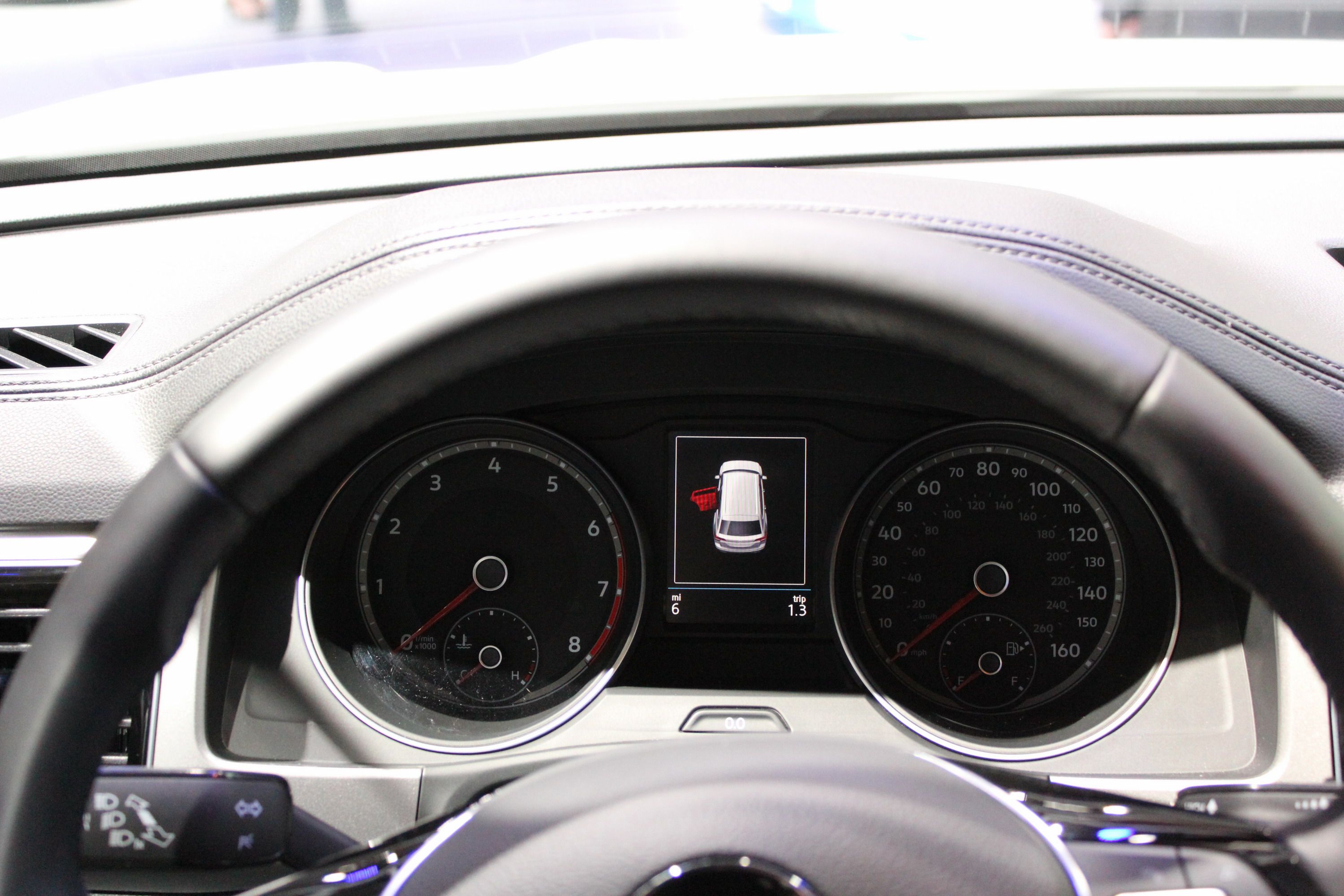
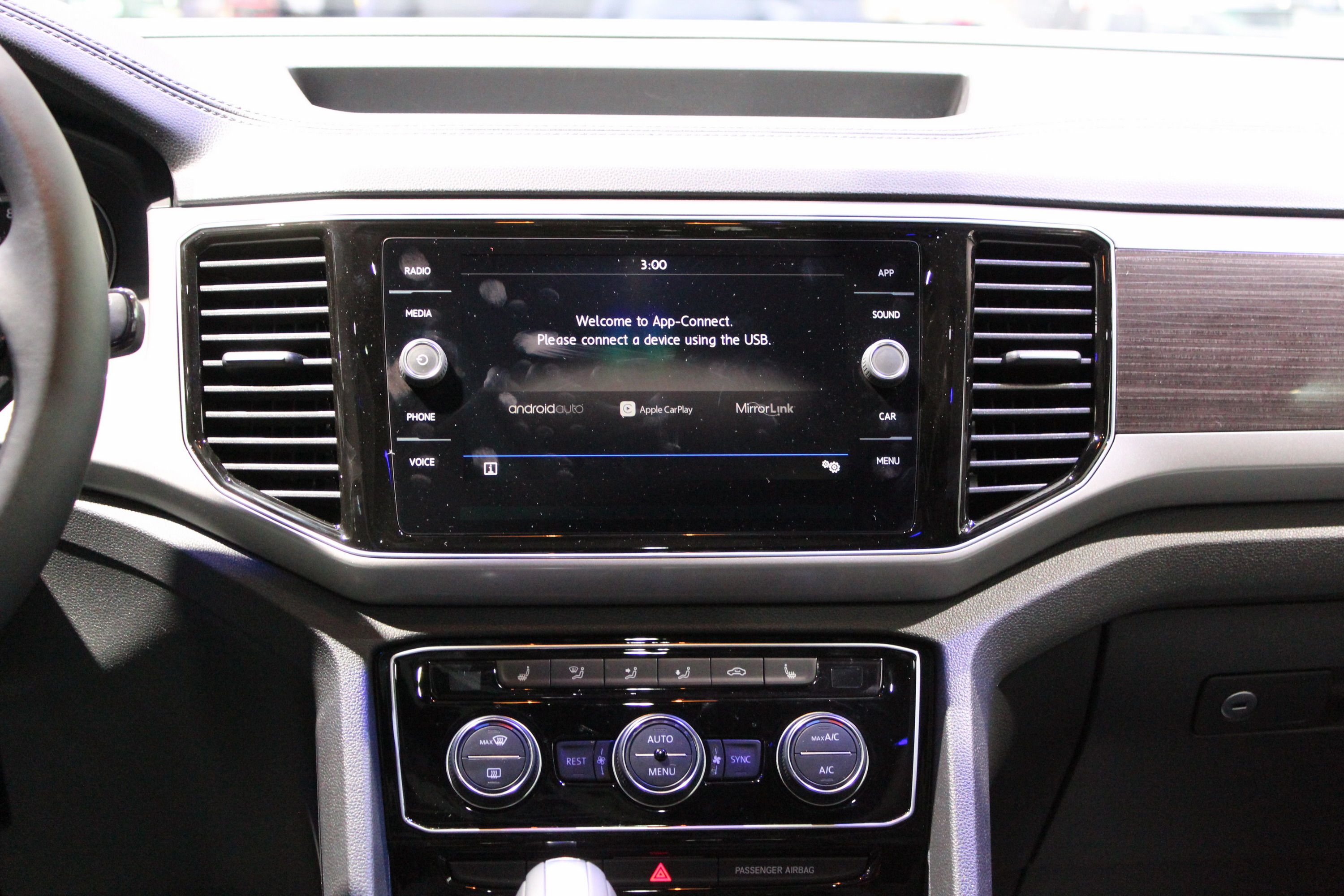
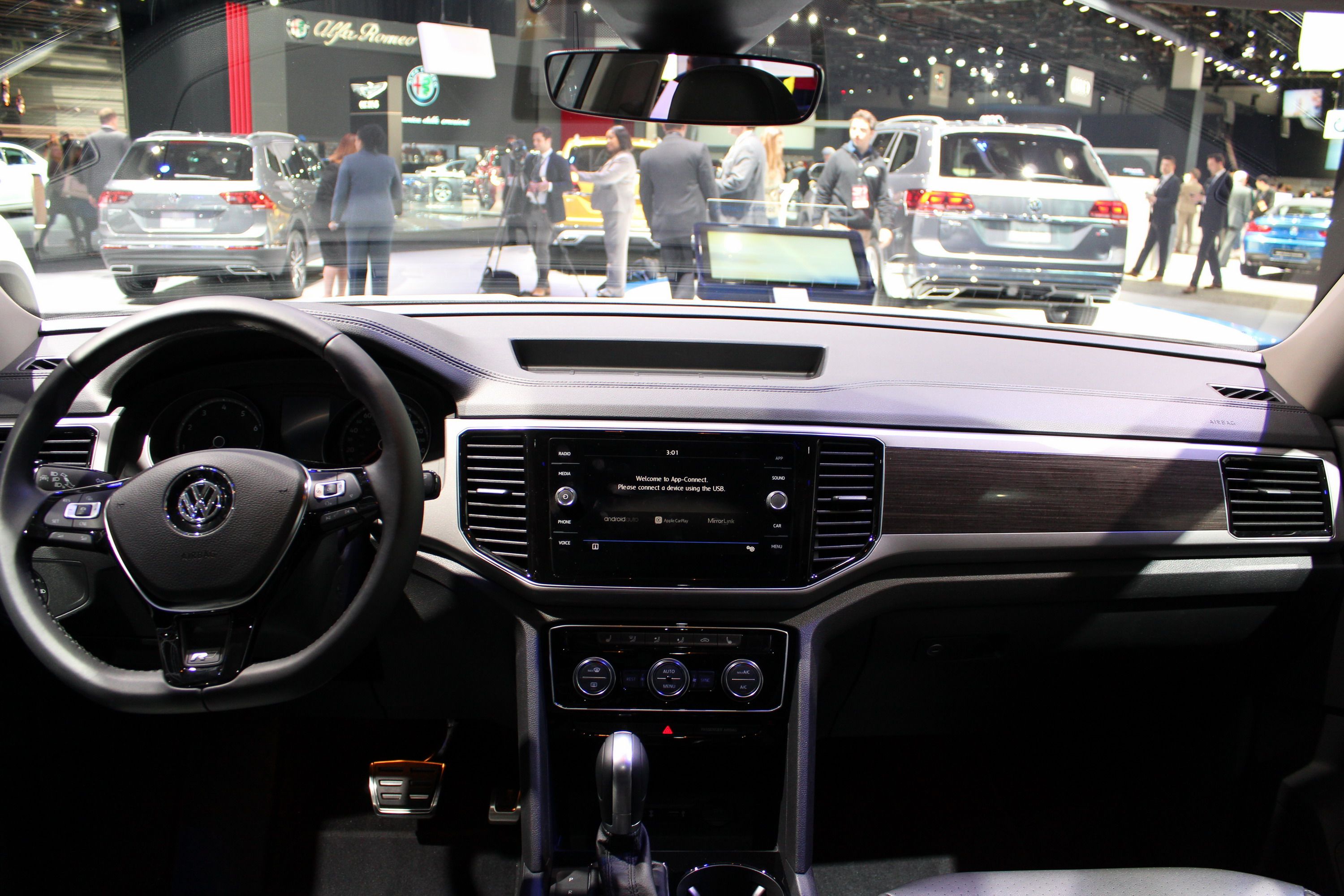
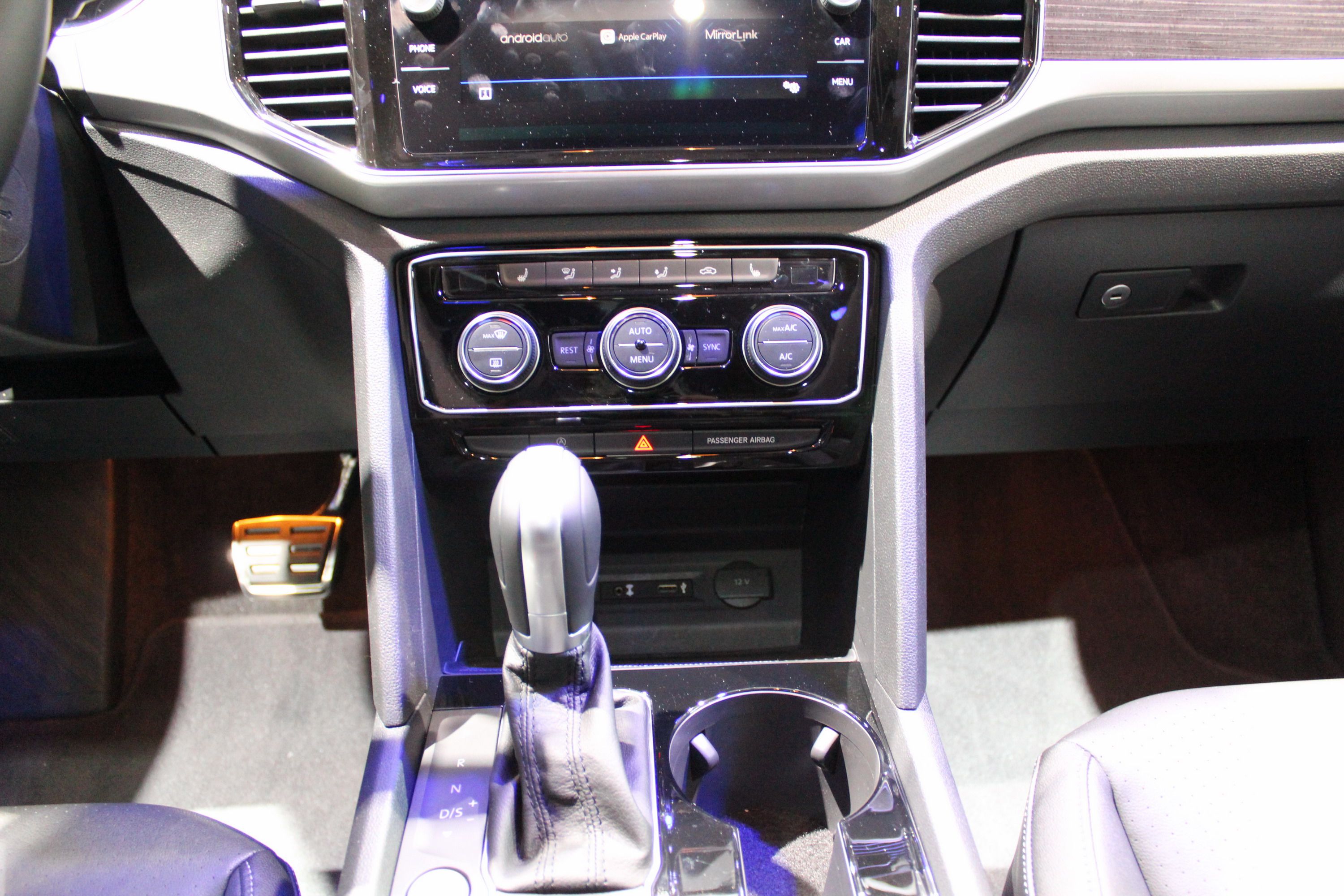
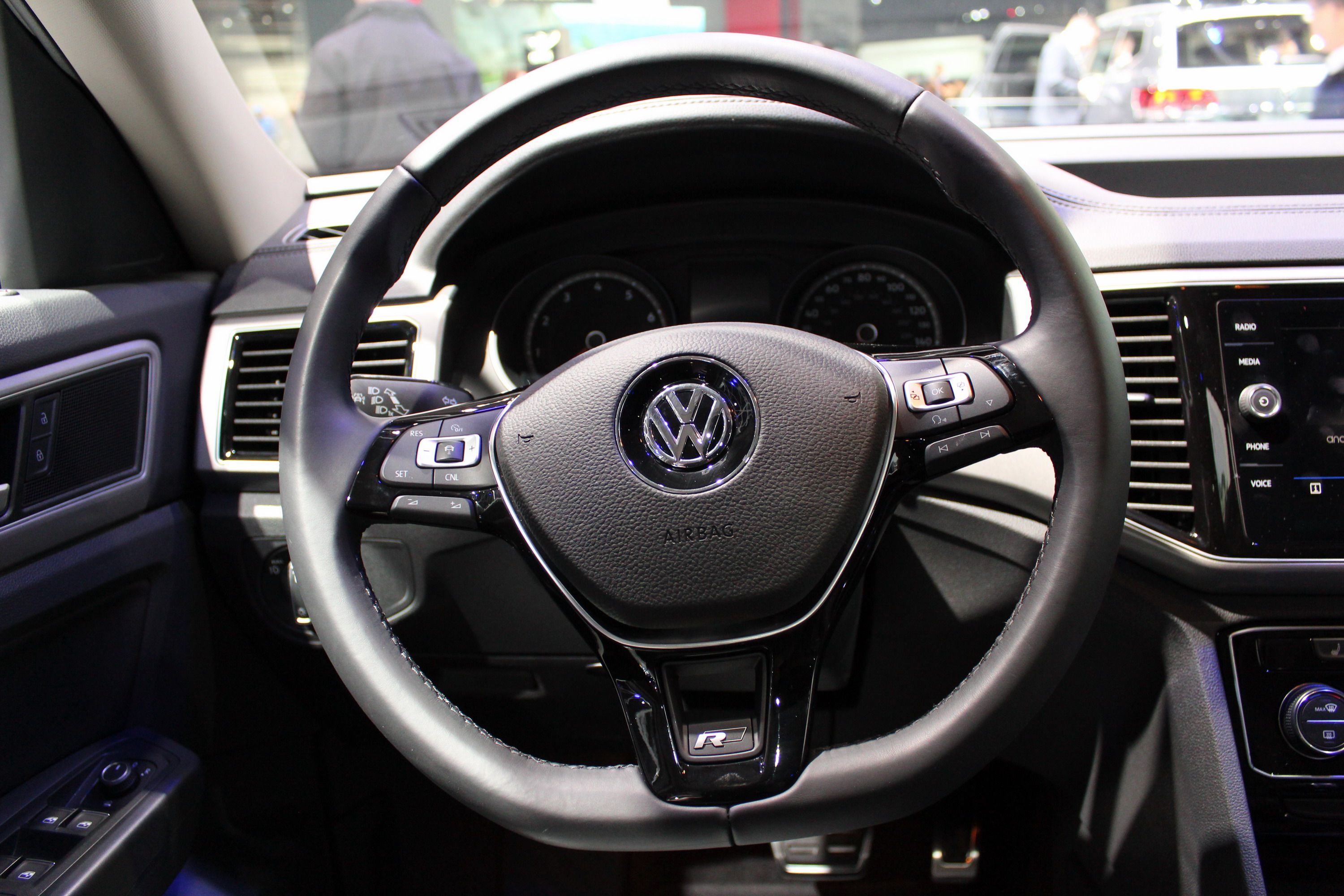
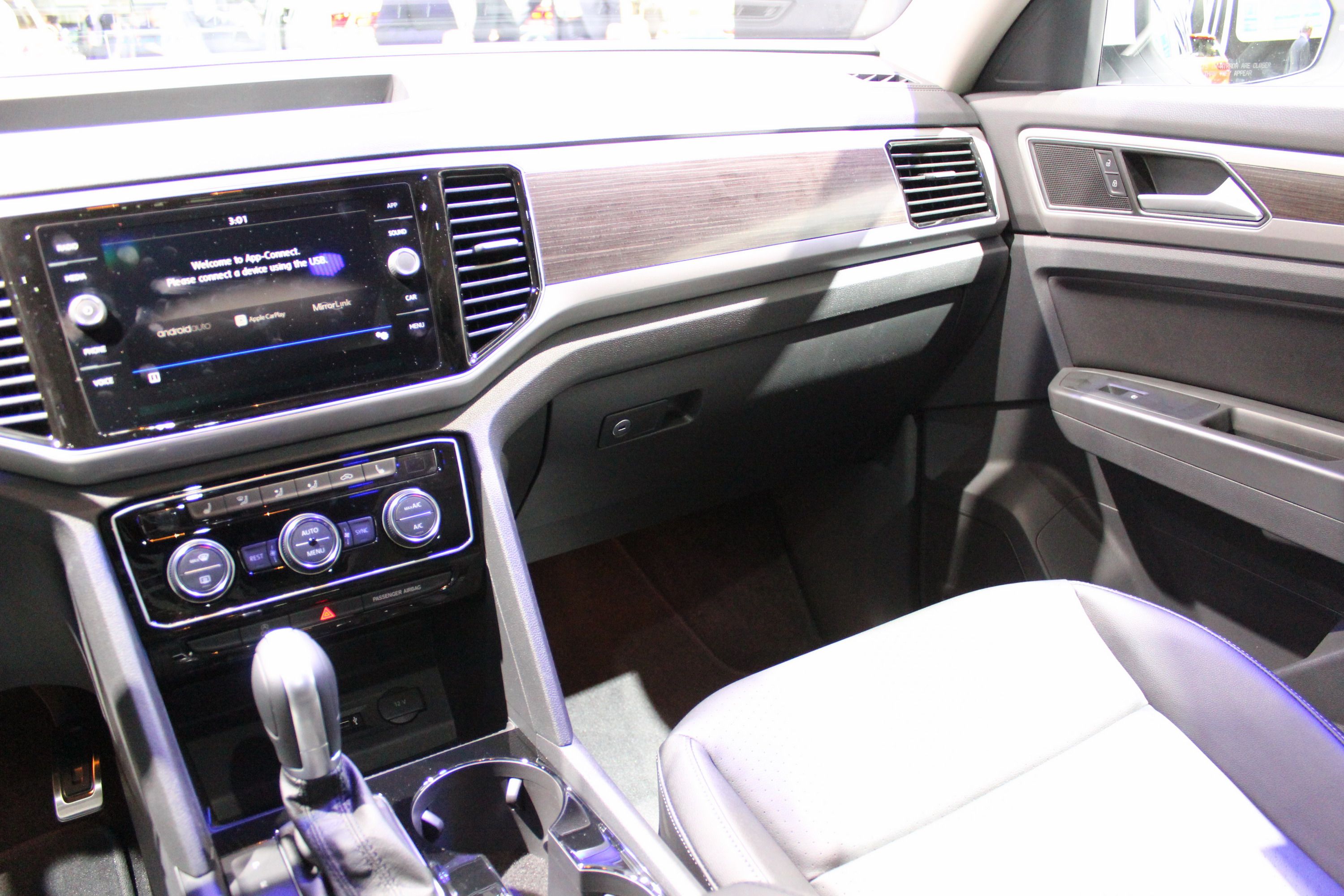
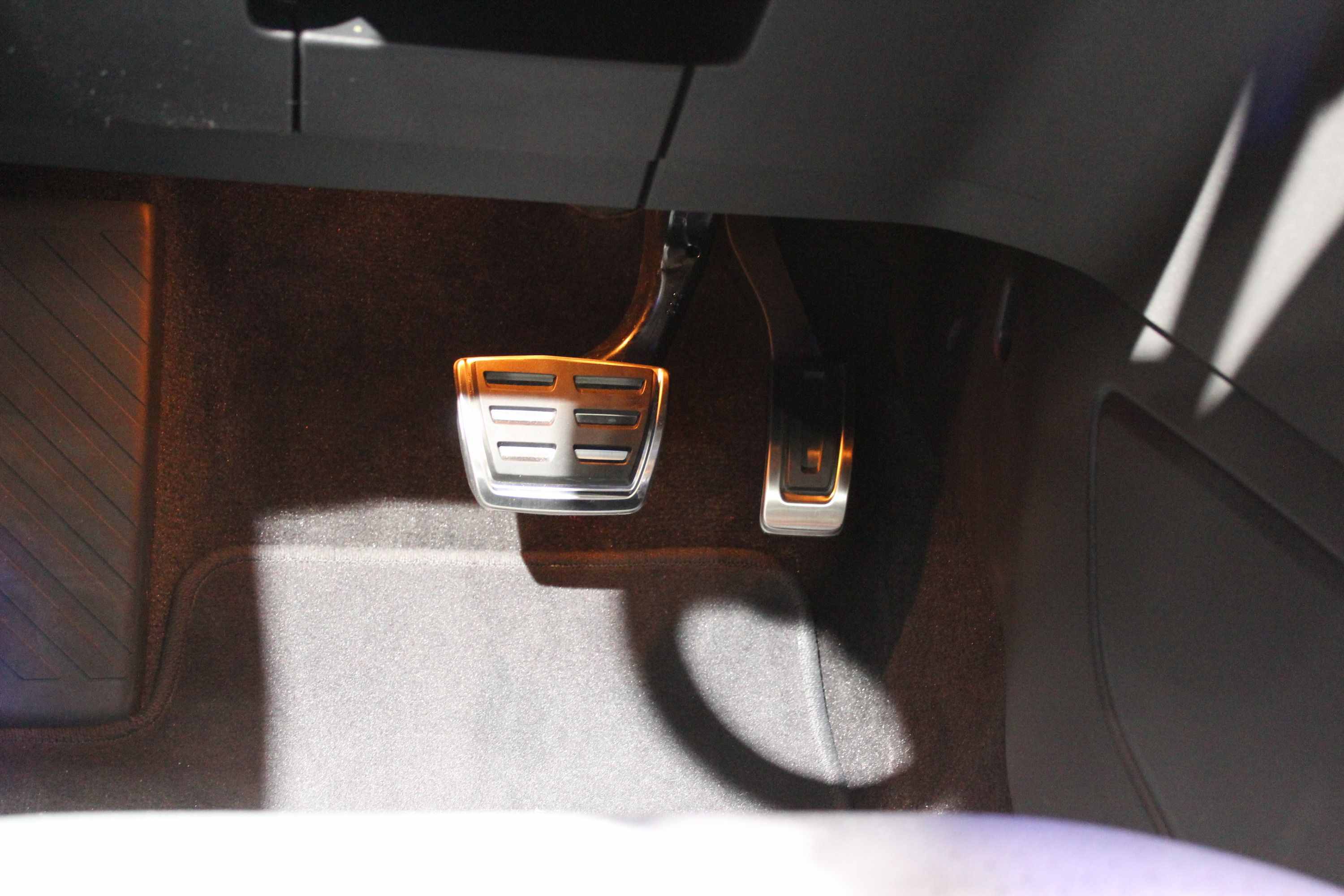
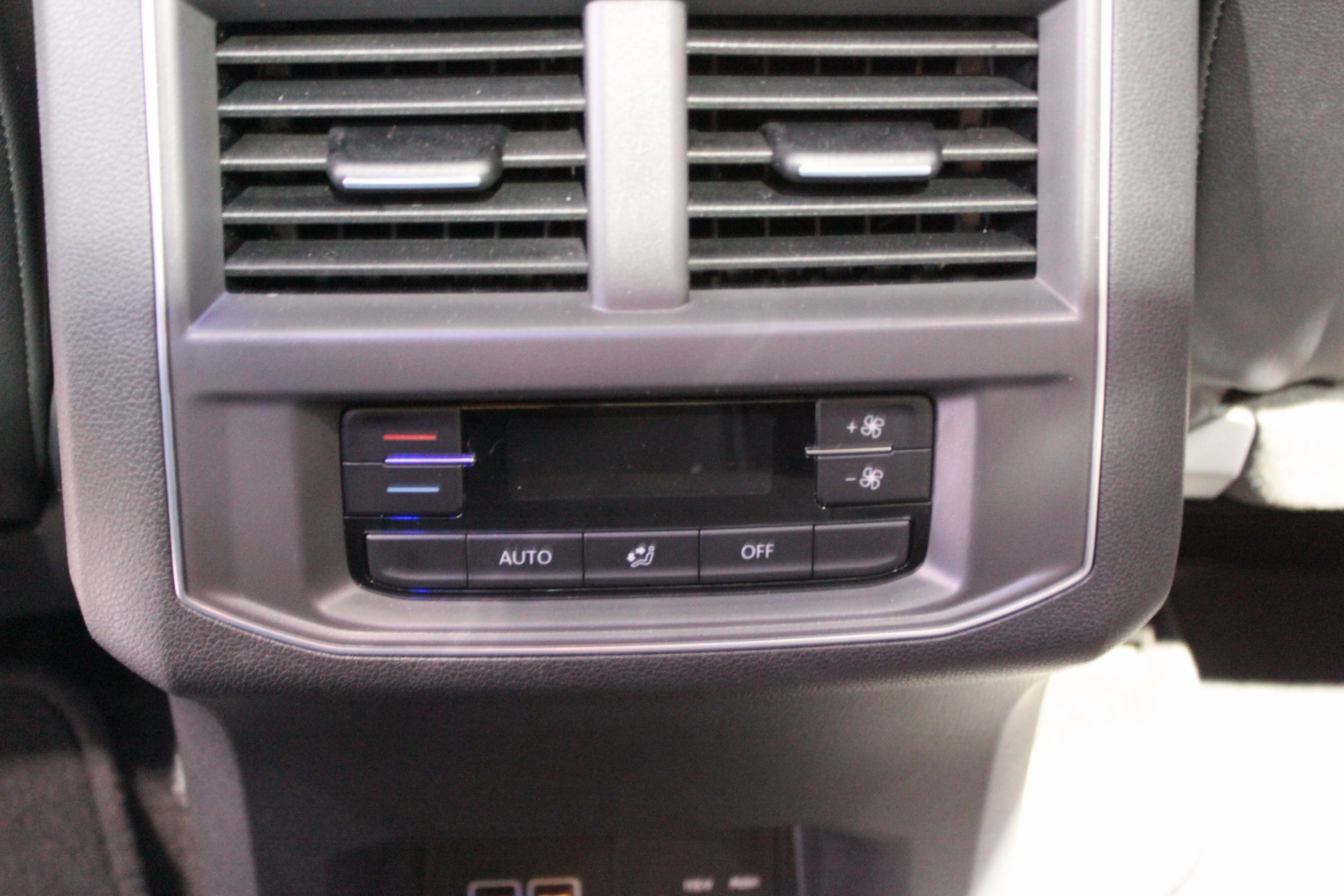
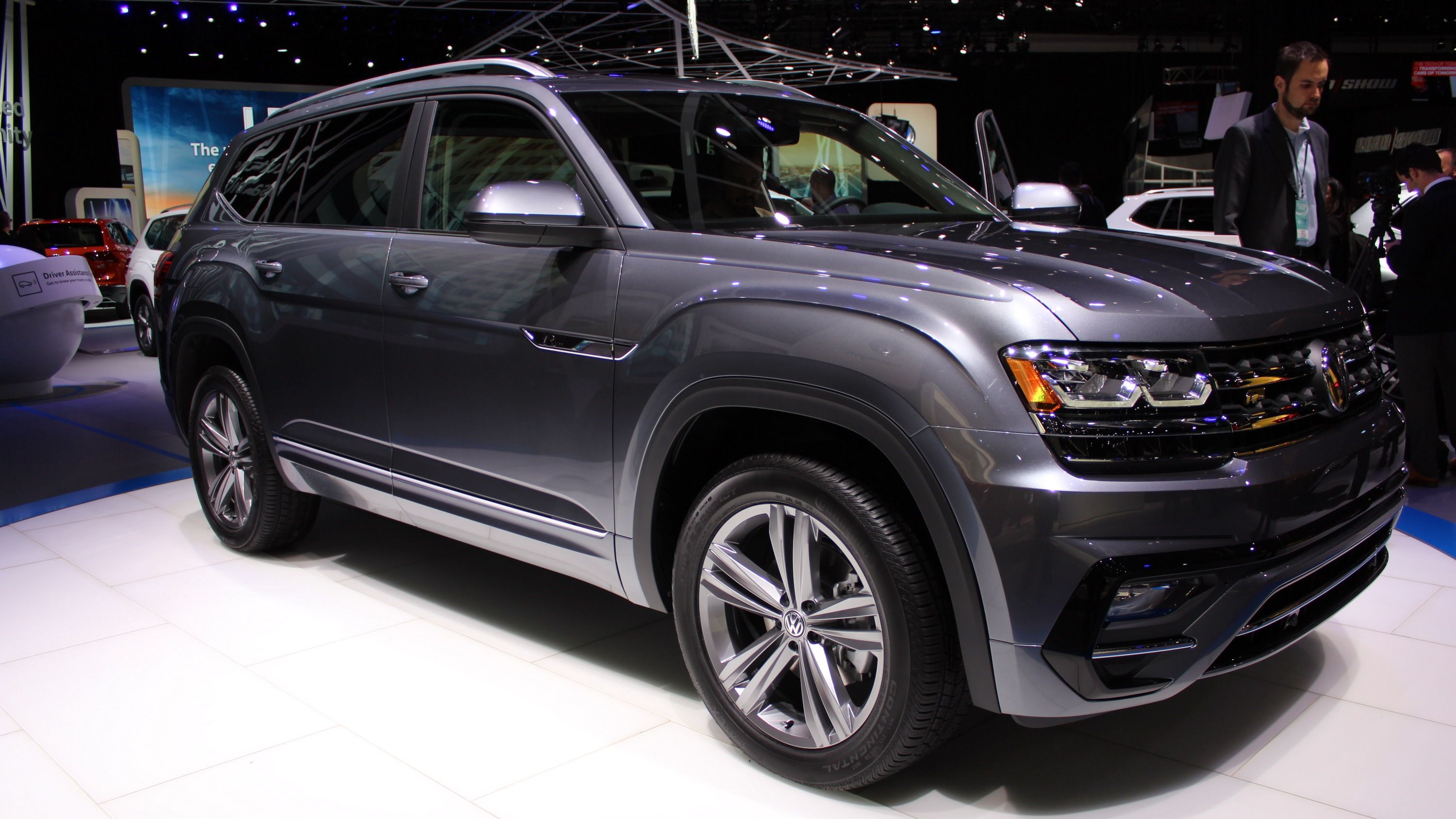
- Make: Array
- Model: 2017 Volkswagen Atlas R-Line
- [do not use] Vehicle Model: Array
What makes the Volkswagen Atlas R-Line special

Exterior enhancements are rather subtle, but they do modify the SUV's appearance, adding a touch of sportiness. Up front, there's a revised bumper than incorporates a new lower section with a body-colored intake surround, gloss-black trim, and chrome horizontal slats. The underbody protection seen on the regular models has also been removed, making the Atlas seem less rugged. Additionally, the big grille sports the familiar "R-Line" badge. Around back, the standard diffuser-like element has been replaced by a slightly modified panel painted in gloss black. Exterior add-ons are rounded off by 20-inch aluminum-alloy wheels in twin-spoke design and body-colored side skirts.




Inside, changes aren't as noticeable. In order to find them, you have to look closer at the steering wheel and its "R-Line" logo on the lower spoke, as well as look under the dashboard for the stainless steel sport pedal covers. Activate the infotainment screen and a new "R-Line" logo pops up. Granted, it's not much, but those who appreciate subtle touches should enjoy this lightly customized cabin.
As usual, nothing changes under the hood, where the R-Line will be available with the standard engine options. Specifically, a 2.0-liter four-cylinder rated at 235 horsepower and a 3.6-liter V-6 that generates 276 horses. Both are turbocharged and come standard with an eight-speed automatic transmission. The 4Motion all-wheel-drive system is available on V-6 models.
There's no word as to when the R-Line will go on sale, but it should follow the standard Atlas models, which are scheduled to go on sale in the Spring of 2017. The base model is likely to come in at around $30,000, while the range-topping SEL trim could fetch around $48,000.
|
Volkswagen Atlas 4-cyl |
Volkswagen Atlas VR6 |
|
|
Engine |
2.0-liter, turbocharged four-cylinder |
3.6-liter VR6 |
|
Horsepower |
238 HP |
280 HP |
|
Transmission |
eight-speed |
eight-speed |
|

